#Pacific Monument by Omri Amrany
Explore tagged Tumblr posts
Text








V-J/V-P Day
Following the atomic bombings of Hiroshima and Nagasaki, Emperor Hirohito announced Japan’s acceptance to the Potsdam Declaration and surrendered on 15th August 1945, effectively marking the end of World War II. However, the official surrender ceremony did not occur until over two weeks later, and thus President Truman marked 2nd September as the official V-J Day.
Learn about V-J Day
It is estimated that anywhere from 60 to 80 million people died during World War II, on all sides of the conflict. V-J Day should be seen as not only the celebration of the defeat of the tyrannical Japanese government of the time, but also the remembrance of those who lost their lives.
There are a number of different ways that people refer to V-J Day. This includes V-P Day, Victory in the Pacific Day, and Victory over Japan Day. No matter how people refer to this day, what matters is that it is the day on which Imperial Japan surrendered in the Second World War, marking the end of the war.
Interestingly, there are really three different dates that can be considered the date of surrender. The first is the 15th of August in 1945, which is when the announcement of Japan’s surrender was made. However, in some parts of the world, including the United States, this was actually the 14th of August in 1945 because of the time differences.
As mentioned, there is also the date that the official document of surrender was signed, which was the 2nd of September in 1945. This is when the Second World War was officially ended.
Because of this, V-J Day is celebrated on different dates throughout the world. While the official US commemoration occurs on the 2nd of September. In the United Kingdom, for example, they actually celebrate V-J Day on the 15th of August.
History of V-J Day
In order to understand the history of V-J Day, we need to delve deeper into the history of the war and the events that happened in the build-up to this date. On both the 6th and the 9th of August, in 1945, the United States dropped atomic bombs on both Nagasaki and Hiroshima. The Soviet Union also declared war on Japan on the 9th of August as well. A day later, on the 10th of August, the government in Japan communicated that it intended to surrender under the Potsdam Declaration terms.
Celebrations around the world started early when they heard that Japan intended to surrender. In Paris, Frenchmen and Americans paraded and sang “Don’t Fence Me In” on Champs-Élysées. On the streets of London, on Regent Street, allied soldiers danced in a conga line.
It was six days later, on the 15th of August, a little bit after noon Japan Standard Time, that it was announced that Japan had accepted the Potsdam Declaration. Emperor Hirohito made the announcement over the radio to the people of Japan. Once the declaration had been signed, the celebrations across the world really ramped up.
In fact, in Life Magazine, they reported the following about Americans celebrating:
It was “as if joy had been rationed and saved up for the three years, eight months and seven days since Sunday, Dec. 7, 1941”
There were a number of different terms that were included within the declaration. This included the following:
“We do not intend that the Japanese shall be enslaved as a race or destroyed as a nation, but stern justice shall be meted out to all war criminals, including those who have visited cruelties upon our prisoners.”
“The Japanese military forces, after being completely disarmed, shall be permitted to return to their homes with the opportunity to lead peaceful and productive lives.”
“Japanese sovereignty shall be limited to the islands of Honshu, Hokkaido, Kyushu, Shikoku, and such minor islands as we determine.”
Why not take a look at the Potsdam Declaration in full to learn more about V-J Day?
How to celebrate V-J Day
There are a lot of different ways that you can celebrate V-J Day. A lot of people have street parties and celebrate with their neighbors and their friends and families. This is something that people enjoy all over the world. It is an opportunity to be patriotic and show your love for the country you were born in. People like to hang up posters and bunting with their national flags, as well as enjoying traditional food and alcohol. What better excuse to have a party?
Of course, we cannot mention V-J Day without paying tribute to all of the men and women who lost their lives during World War Two. There are many different memorials and marks of honor that go on around the world on this day. As individuals, it is important that we all take a moment to reflect on those brave people who went to war for their country, with some never returning. Every year, it helps to learn more about the war and about the people who lost their lives. Pay honor to them and their families by researching these people as individuals and sparing some time to think about them.
You can also spend V-J Day learning more about the war. After all, there were many battles that were fought, and there are many documents, textbooks, and research papers on the war and the build-up of it. After all, years and years were spent in battle, and so there is a lot to read about. Enrich your knowledge so that you can have a better understanding of what the men and the women of your country went through during this period.
You can also learn more about the Japanese surrender. The start of the surrender can probably be dated back to the Battle of Okinawa, which started on the 1st of April and ended on the 21st of June in 1945. During this battle, there were more than 117,000 Japanese casualties, and over 82,000 U.S. casualties. It is also estimated that approximately one-fourth of the civilian population of Okinawan died, with a lot of people dying in mass suicides that the Imperial Japanese Army had organized. A month later, on the 26th of July, the Potsdam Declaration was issued. Truman stated the following to Japan:
“Surrender or suffer prompt and utter destruction.”
At the time, the declaration was rejected, but as we all know today, it then came to be accepted a month later.
It is important to remember that V-J Day is about more than just victory, though. We should think about all of the men and women, on both sides of the battle, who lost their lives, as well as the innocent civilians who were caught up in the middle of a horrific war. On V-J Day, we salute you.
Source
#Pacific Monument by Omri Amrany#Unconditional Surrender by Seward Johnson#Eduardo Kobra’s V-J Day in Times Square by Alfred Eisenstaed Mural#V-J Day#V-P Day#Sarasota#New York City#Community Veterans Memorial#Munster#Indiana#USA#travel#original photography#vacation#tourist attraction#landmark#cityscape#World War II#World War Two#2 September 1945#military history#US history#WWII#public art
2 notes
·
View notes
Text












Japan accepted the Allied terms of surrender in World War II and the Emperor records the Imperial Rescript on Surrender on August 14, 1945 (August 15 in Japan Standard Time).
#Pacific Monument by Omri Amrany#Community Veterans Memorial#Munster#Chicago WWII Submarine Veterans Memorial#Washington#vacation#USA#Fort Columbia Historical State Park#New York City#Manhattan#Indiana#Eduardo Kobra’s V-J Day in Times Square by Alfred Eisenstaed Mural#USS Lexington Museum - National Historic Landmark#Unconditional Surrender by Seward Johnson#Japan#surrender#14 August 1945#15 August 1945#anniversary#US history#World War Two#WWII#original photography#travel#tourist attraction#architecture#landmark#cityscape
2 notes
·
View notes
Text
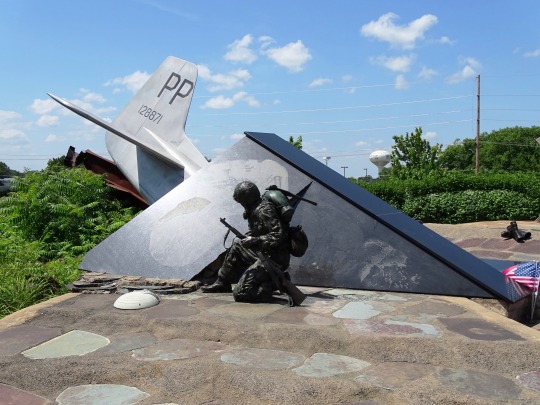

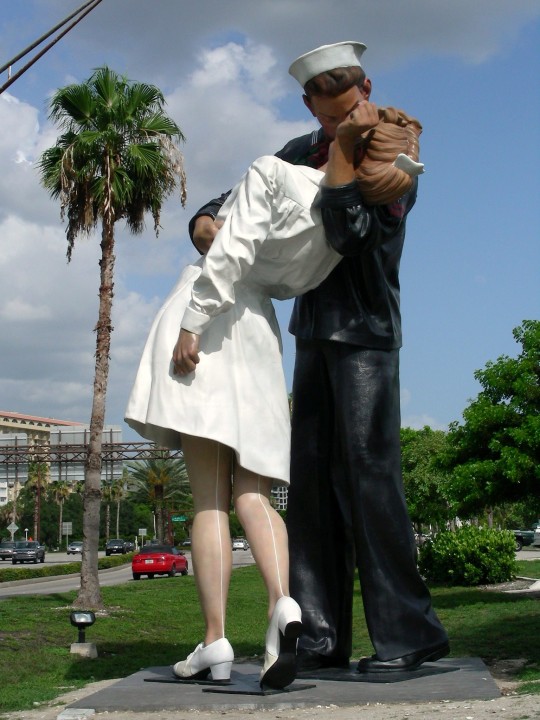
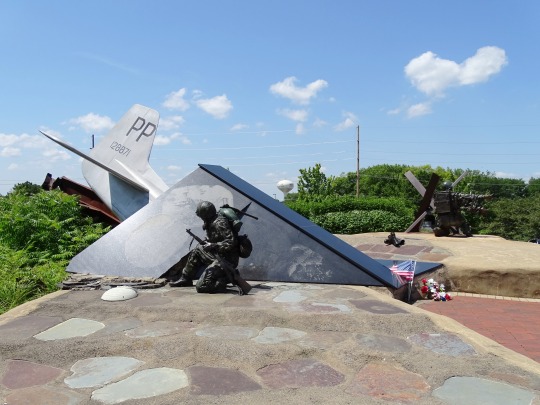



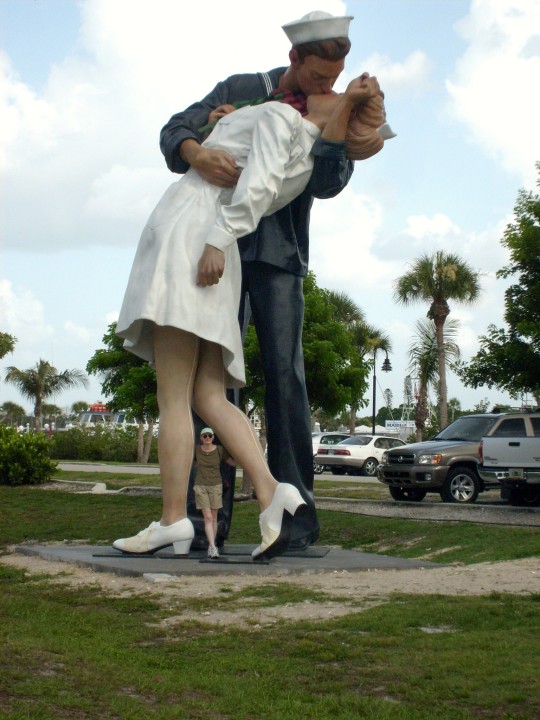
V-J/V-P Day
Following the atomic bombings of Hiroshima and Nagasaki, Emperor Hirohito announced Japan’s acceptance to the Potsdam Declaration and surrendered on 15th August 1945, effectively marking the end of World War II. However, the official surrender ceremony did not occur until over two weeks later, and thus President Truman marked 2nd September as the official V-J Day.
Learn about V-J Day
It is estimated that anywhere from 60 to 80 million people died during World War II, on all sides of the conflict. V-J Day should be seen as not only the celebration of the defeat of the tyrannical Japanese government of the time, but also the remembrance of those who lost their lives.
There are a number of different ways that people refer to V-J Day. This includes V-P Day, Victory in the Pacific Day, and Victory over Japan Day. No matter how people refer to this day, what matters is that it is the day on which Imperial Japan surrendered in the Second World War, marking the end of the war.
Interestingly, there are really three different dates that can be considered the date of surrender. The first is the 15th of August in 1945, which is when the announcement of Japan’s surrender was made. However, in some parts of the world, including the United States, this was actually the 14th of August in 1945 because of the time differences.
As mentioned, there is also the date that the official document of surrender was signed, which was the 2nd of September in 1945. This is when the Second World War was officially ended.
Because of this, V-J Day is celebrated on different dates throughout the world. While the official US commemoration occurs on the 2nd of September. In the United Kingdom, for example, they actually celebrate V-J Day on the 15th of August.
History of V-J Day
In order to understand the history of V-J Day, we need to delve deeper into the history of the war and the events that happened in the build-up to this date. On both the 6th and the 9th of August, in 1945, the United States dropped atomic bombs on both Nagasaki and Hiroshima. The Soviet Union also declared war on Japan on the 9th of August as well. A day later, on the 10th of August, the government in Japan communicated that it intended to surrender under the Potsdam Declaration terms.
Celebrations around the world started early when they heard that Japan intended to surrender. In Paris, Frenchmen and Americans paraded and sang “Don’t Fence Me In” on Champs-Élysées. On the streets of London, on Regent Street, allied soldiers danced in a conga line.
It was six days later, on the 15th of August, a little bit after noon Japan Standard Time, that it was announced that Japan had accepted the Potsdam Declaration. Emperor Hirohito made the announcement over the radio to the people of Japan. Once the declaration had been signed, the celebrations across the world really ramped up.
In fact, in Life Magazine, they reported the following about Americans celebrating:
It was “as if joy had been rationed and saved up for the three years, eight months and seven days since Sunday, Dec. 7, 1941”
There were a number of different terms that were included within the declaration. This included the following:
“We do not intend that the Japanese shall be enslaved as a race or destroyed as a nation, but stern justice shall be meted out to all war criminals, including those who have visited cruelties upon our prisoners.”
“The Japanese military forces, after being completely disarmed, shall be permitted to return to their homes with the opportunity to lead peaceful and productive lives.”
“Japanese sovereignty shall be limited to the islands of Honshu, Hokkaido, Kyushu, Shikoku, and such minor islands as we determine.”
Why not take a look at the Potsdam Declaration in full to learn more about V-J Day?
How to celebrate V-J Day
There are a lot of different ways that you can celebrate V-J Day. A lot of people have street parties and celebrate with their neighbors and their friends and families. This is something that people enjoy all over the world. It is an opportunity to be patriotic and show your love for the country you were born in. People like to hang up posters and bunting with their national flags, as well as enjoying traditional food and alcohol. What better excuse to have a party?
Of course, we cannot mention V-J Day without paying tribute to all of the men and women who lost their lives during World War Two. There are many different memorials and marks of honor that go on around the world on this day. As individuals, it is important that we all take a moment to reflect on those brave people who went to war for their country, with some never returning. Every year, it helps to learn more about the war and about the people who lost their lives. Pay honor to them and their families by researching these people as individuals and sparing some time to think about them.
You can also spend V-J Day learning more about the war. After all, there were many battles that were fought, and there are many documents, textbooks, and research papers on the war and the build-up of it. After all, years and years were spent in battle, and so there is a lot to read about. Enrich your knowledge so that you can have a better understanding of what the men and the women of your country went through during this period.
You can also learn more about the Japanese surrender. The start of the surrender can probably be dated back to the Battle of Okinawa, which started on the 1st of April and ended on the 21st of June in 1945. During this battle, there were more than 117,000 Japanese casualties, and over 82,000 U.S. casualties. It is also estimated that approximately one-fourth of the civilian population of Okinawan died, with a lot of people dying in mass suicides that the Imperial Japanese Army had organized. A month later, on the 26th of July, the Potsdam Declaration was issued. Truman stated the following to Japan:
“Surrender or suffer prompt and utter destruction.”
At the time, the declaration was rejected, but as we all know today, it then came to be accepted a month later.
It is important to remember that V-J Day is about more than just victory, though. We should think about all of the men and women, on both sides of the battle, who lost their lives, as well as the innocent civilians who were caught up in the middle of a horrific war. On V-J Day, we salute you.
Source
#Pacific Monument by Omri Amrany#Unconditional Surrender by Seward Johnson#Eduardo Kobra’s V-J Day in Times Square by Alfred Eisenstaed Mural#V-J Day#V-P Day#Sarasota#New York City#Community Veterans Memorial#Munster#Indiana#USA#travel#original photography#vacation#tourist attraction#landmark#cityscape#World War II#World War Two#2 September 1945#military history#US history#WWII#public art
7 notes
·
View notes
Photo
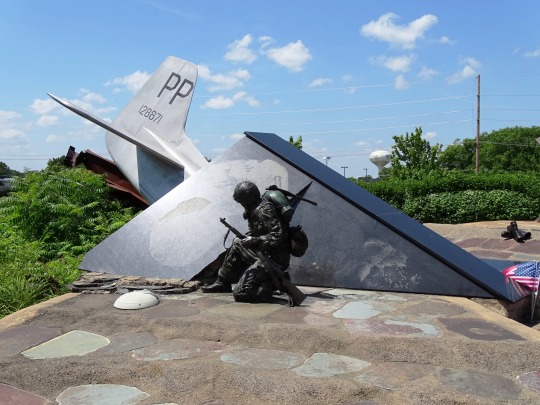





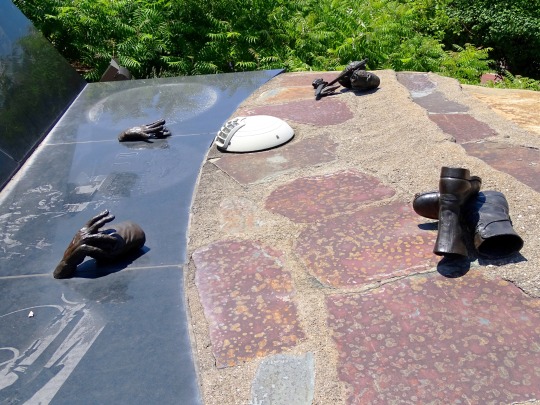
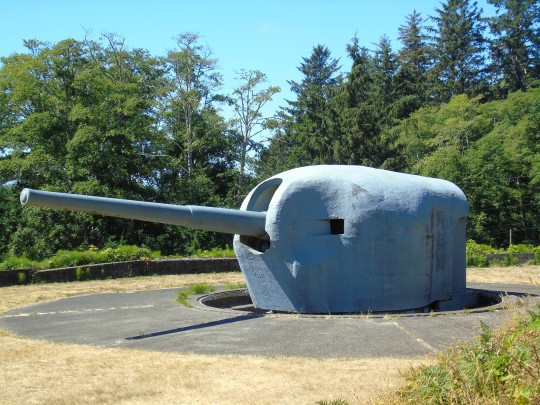

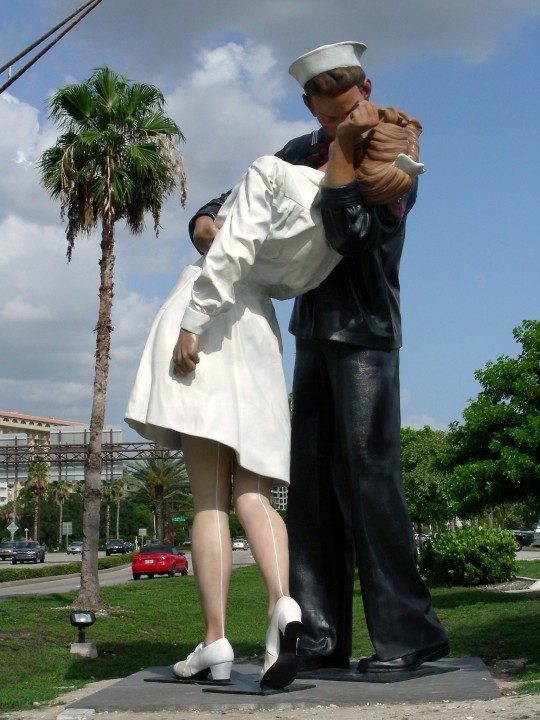
Japan accepted the Allied terms of surrender in World War II and the Emperor records the Imperial Rescript on Surrender on August 14, 1945 (August 15 in Japan Standard Time).
#Pacific Monument by Omri Amrany#Community Veterans Memorial#Munster#Chicago WWII Submarine Veterans Memorial#Washington#vacation#USA#Fort Columbia Historical State Park#New York City#Manhattan#Indiana#Eduardo Kobra’s V-J Day in Times Square by Alfred Eisenstaed Mural#USS Lexington Museum - National Historic Landmark#Unconditional Surrender by Seward Johnson#Japan#surrender#14 August 1945#15 August 1945#anniversary#US history#World War Two#WWII#original photography
2 notes
·
View notes
Text
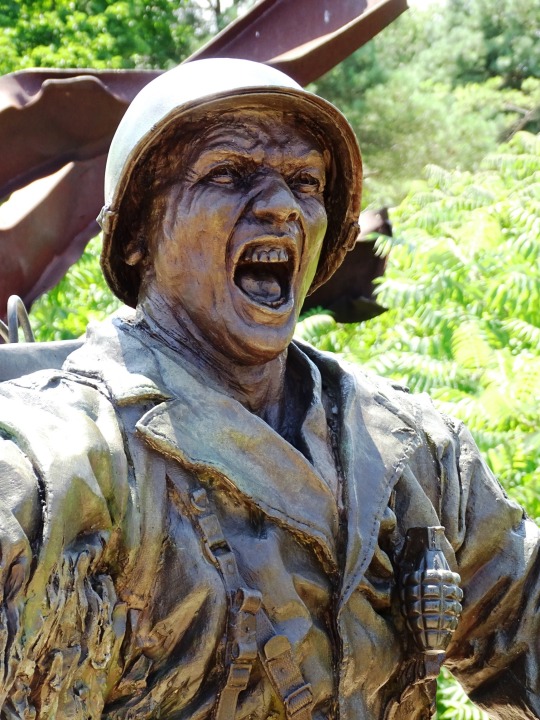
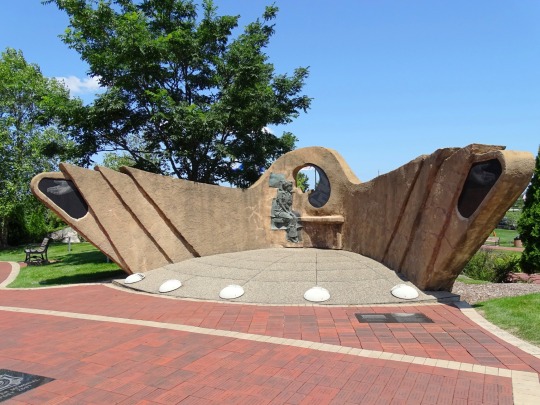
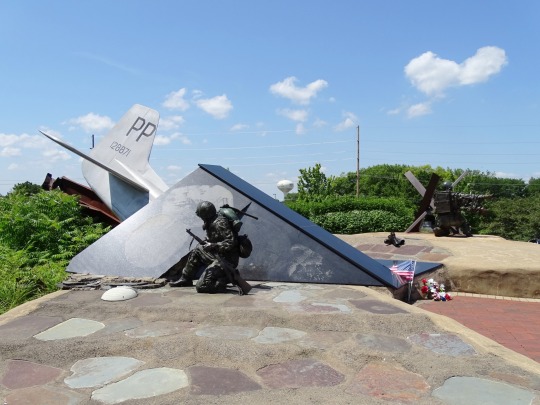
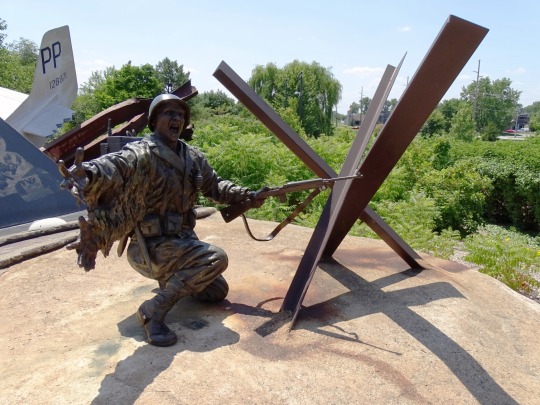
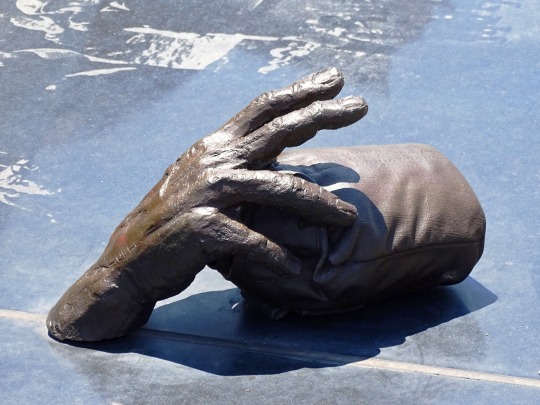

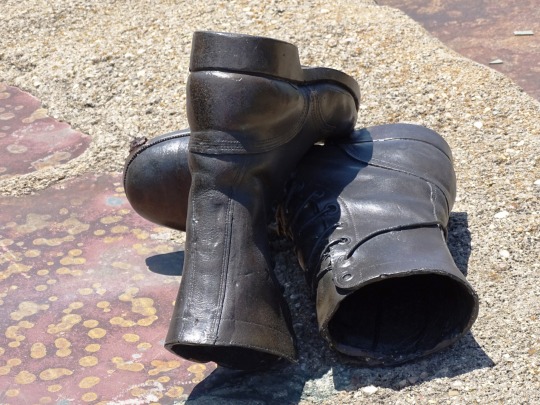
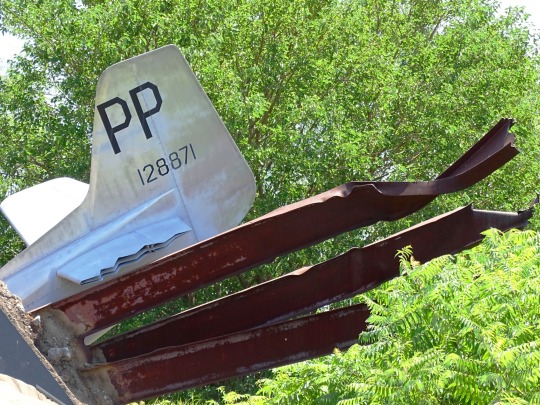
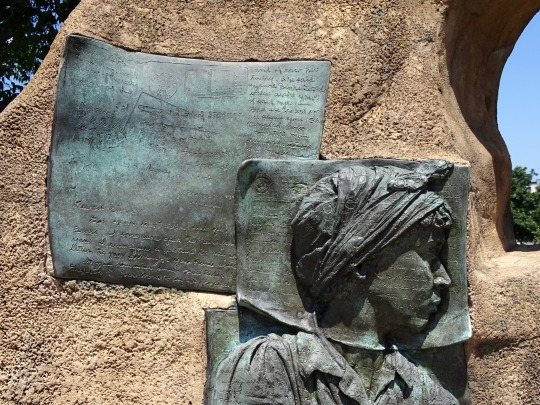
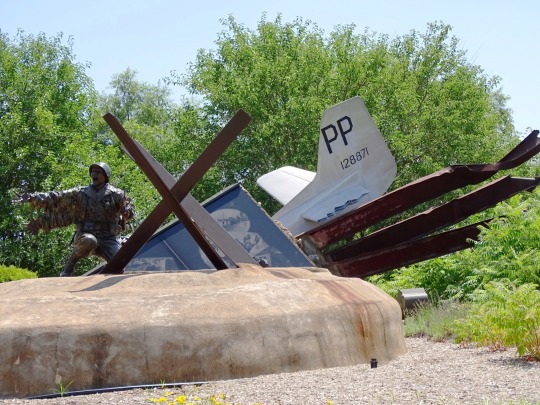
World War II: Nazi Germany and Slovakia invaded Poland, beginning the European phase of World War II on September 1, 1939.
#World War II#Germany#invaded#Poland#start#WWII#WW2#World War Two#1 September 1939#original photography#vacation#travel#tourist attraction#landmark#architecture#Europe Monument by Omri Amrany#Pacific Monument#Community Veterans Memorial#Munster#Indiana#history#85th anniversary#USA#summer 2019#Home Front Monument#cityscape
3 notes
·
View notes
Photo
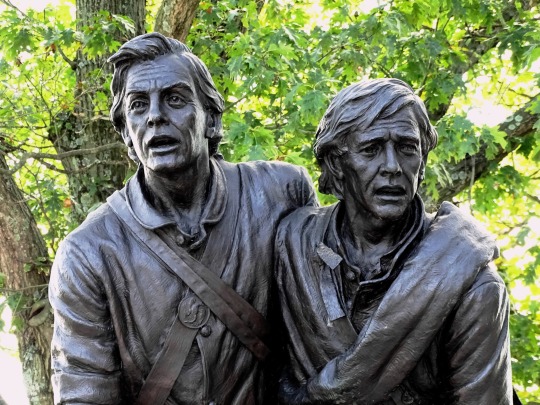
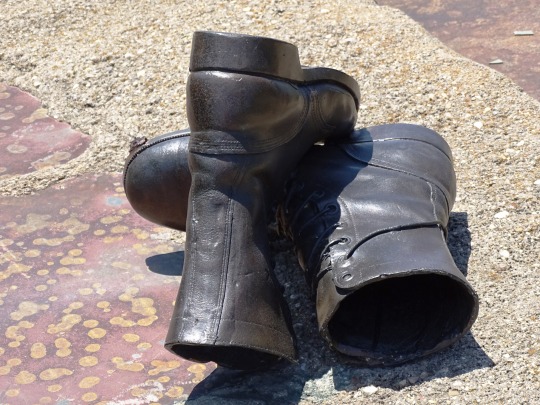
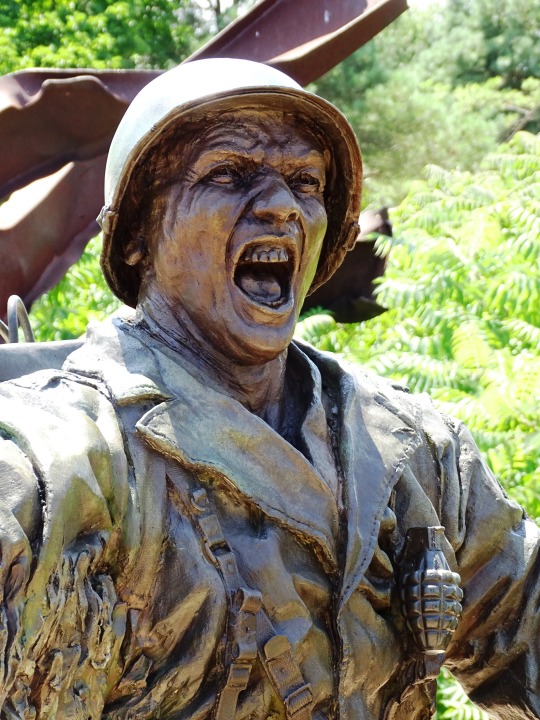

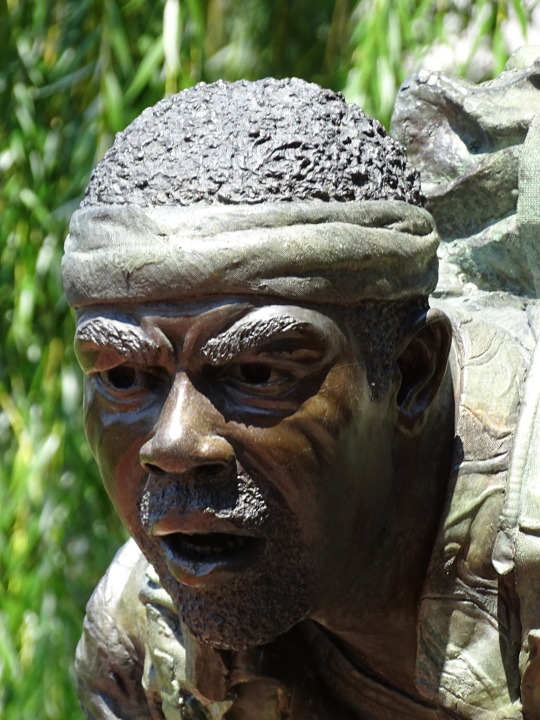
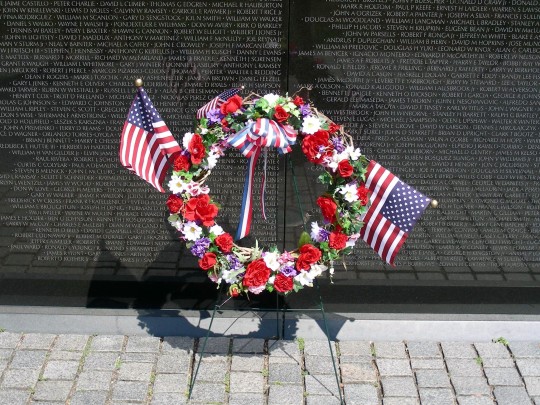
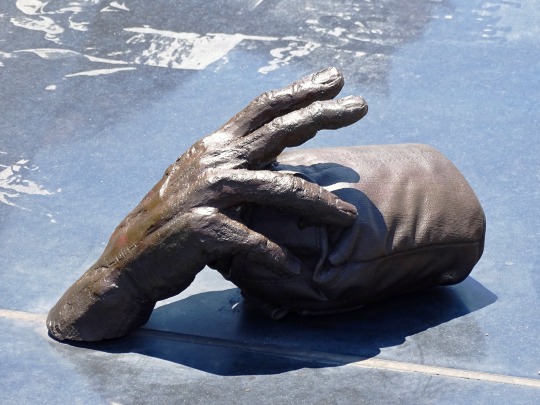
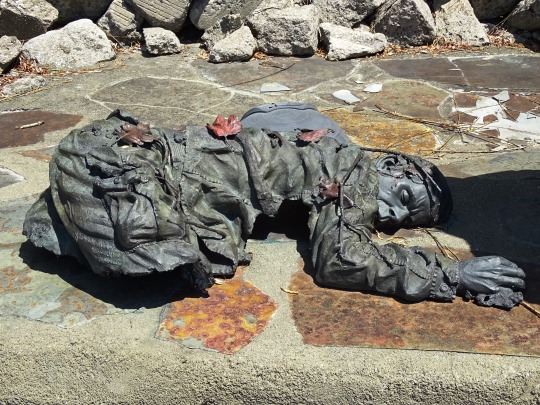
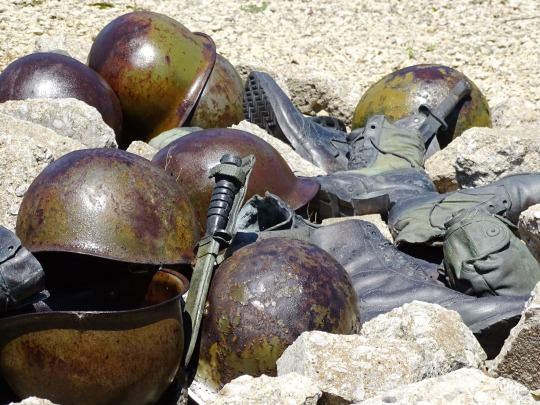

Memorial Day
Memorial Day on May 29 conjures images of hamburgers, hot dogs, swimming pools, and summertime for many Americans. But the last Monday in May serves, most importantly, as a time to honor those who died while fighting in the U.S. Armed Forces. It’s a holiday steeped in somber American history and tradition. The day actually began as “Decoration Day,” following the Civil War, when mourners placed flowers on the graves of Union and Confederate soldiers. Yes, Memorial Day has also come to signify the “unofficial” start of summer, but let’s remember the heroes who made it all possible.
When is Memorial Day 2023?
Men and women who’ve served and sacrificed their lives in the U.S. Armed Forces are honored on Memorial Day on May 29.
History of Memorial Day
The Civil War ended in the spring of 1865 when Robert E. Lee surrendered the last major Confederate army to Ulysses S. Grant at the Appomattox Court House on April 9. Over 620,000 soldiers died in the four-year conflict. General John A. Logan of the Grand Army of the Republic (an organization of Union veterans) would eventually select May 30, 1868, as a day to pay tribute to the fallen:
“The 30th of May, 1868, is designated for the purpose of strewing with flowers, or otherwise decorating the graves of comrades who died in defense of their country during the late rebellion, and whose bodies now lie in almost every city, village, and hamlet churchyard in the land…”
Logan apparently chose May 30 because flowers would be in bloom all over the country. By the end of the 19th century, Memorial Day ceremonies were being held on May 30 throughout the nation. States passed proclamations, and the Army and Navy adopted rules for proper observance at their facilities.
The crowd attending the first Memorial Day ceremony at Arlington National Cemetery was approximately the same size as those that attend today’s observance — about 5,000 people. Small American flags were placed on each grave — a tradition still followed at many national cemeteries today. In recent years, the custom has grown in many families to decorate the graves of all departed loved ones.
By 1890, each Northern state had made Decoration Day an official holiday. But this was not the case in the South, where states continued to honor their dead on separate days until after the First World War.
The May 30 date held for decades. But, in 1968, Congress passed the Uniform Monday Holiday Act, which established Memorial Day as the last Monday in May in order to create a three-day weekend for federal employees. The change took place in 1971. The same law also declared Memorial Day a federal holiday.
Memorial Day timeline
1864 Beginning of a Tradition
Women from Pennsylvania place flowers on the graves of fallen soldiers after the Battle of Gettysburg.
May 5, 1866 Birthplace of Memorial Day
Waterloo, New York, begins hosting an annual community service in remembrance of soldiers whose lives were lost.
May 5, 1868 It’s Official
Major General John A. Logan issues General Order No.11, making the day official.
2020 Virtual Solidarity
The organization American Veterans (AMVETS) holds a virtual motorcycle rally in honor of Memorial Day.
Traditions of the Day
Many Americans observe Memorial Day by visiting cemeteries or memorials, holding family gatherings, and participating in parades. It’s the three-day weekend that kicks off the summer season and the time for hanging out at the beach and lakes, and barbecuing with friends and family. But Memorial Day is also the most solemn American holiday — a day to remember those who made the ultimate sacrifice while defending their nation.
Towns and cities across the country host grand Memorial Day parades every year, often featuring senior veterans and military personnel. Some of the biggest parades take place in New York, Chicago, and Washington, D.C. Cemeteries and memorials are also visited by Americans, with some citizens wearing or holding red poppies to symbolize those who have fallen in war. This tradition has been around since World War I. Weekend trips and parties are also arranged to balance out the somberness of the day and welcome the summer.
By the Numbers
620,000 – the number of soldiers who died on both sides of the Civil War.
1868 – the year when President James Garfield delivered a very long speech on Memorial Day.
2500 – the number of motorcyclists who participated in the first Rolling Thunder rally.
$1.5 billion – the number of dollars typically spent on meat and seafood in preparation for Memorial Day weekend.
60% – the percentage of American households who attend or host a barbecue on this day.
1.5 million – the number of people who watch the National Memorial Day Parade.
900,000 – the number of people who gathered for the Rolling Thunder Memorial Day motorcycle rally in 2019.
260,000 – the number of graves at Arlington National Cemetery adorned with flags in 2019.
45 million – the number of men and women who have served in a time of war for the U.S.
3 P.M. – the time of day when a moment of silence is observed by Americans throughout the country on this day.
How to Observe Memorial Day
Pay your respects
Participate in the National Moment of Remembrance
Fly the flag
Lay flowers on the grave of a family member or friend who died while serving. If you don't personally know any fallen soldiers, visit a local cemetery anyway. After all, they made the ultimate sacrifice for you.
By doing so, you'll be joining millions of Americans in national unity to honor Memorial Day for what it truly is — a day to remember those who laid down their lives in service of their country and its citizens.
If you have an American flag at home, be sure to fly it at half-mast until noon, then raise it to full mast for the rest of the day. The practice of lowering and then raising the flag has been observed for over 100 years to symbolize America's persistence in the face of loss.
5 CREATIVE WAYS TO DECORATE FOR MEMORIAL DAY
Unfurl those flags
Line your walkway with mini flags
Red, white, and blue layered cake
Stars and Stripes windsocks
Symbolic flowers
Often people store their American flags and raise them only during patriotic holidays. This is definitely one of those days.
Nothing honors our deceased veterans like dozens (or even hundreds) of flags in your front lawn and entryway.
It’s a decoration you can eat.
It’s festive, fun, and patriotic. Need we say more?
Even if you haven’t lost a loved one who served in the military, you can still honor the fallen with flowers at home. Red, navy, and blue dahlias combined with white rose silk flowers can make a stunning visual combination.
Source
#Maryland State Monument by Lawrence Monroe Ludtke#original photography#Gettysburg National Military Park#Community Veterans Memorial#Munster#Indiana#Pennsylvania#Europe Monument#Pacific Monument#Omri Amrany#A Soldier's Sacrifice by Julie Rotblatt-Amrany#Vietnam Veterans Memorial by Maya Lin#Washington DC#summer 2019#2009#free admission#tourist attraction#landmark#architecture#cityscape#Memorial Day#29 May 2023#last Monday in May#MemorialDay
2 notes
·
View notes
Text
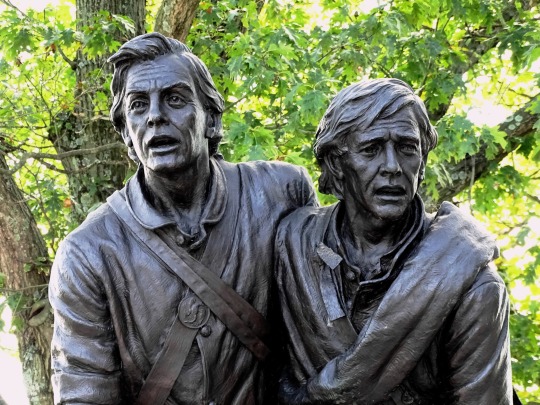
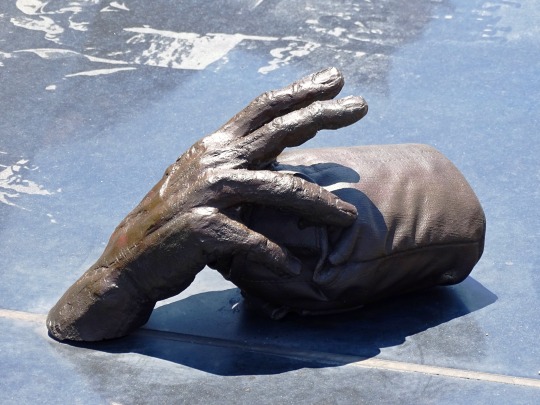
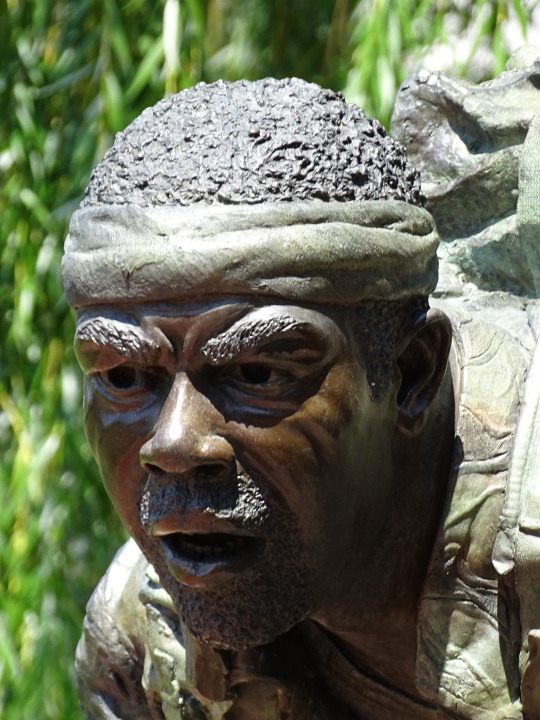

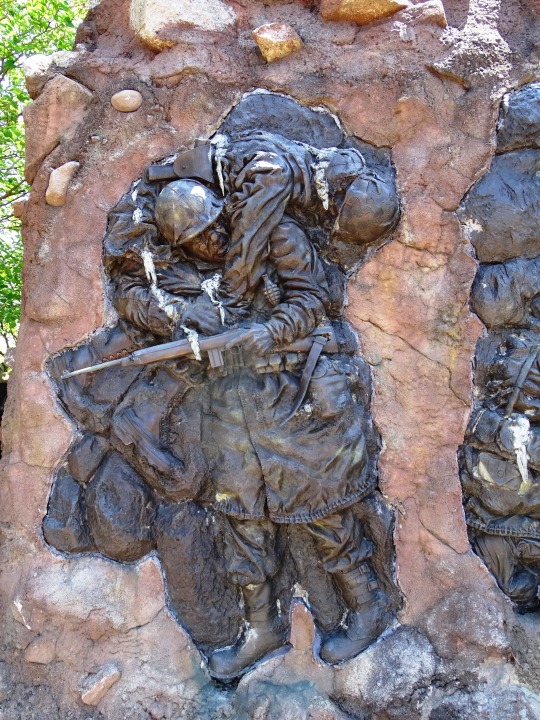
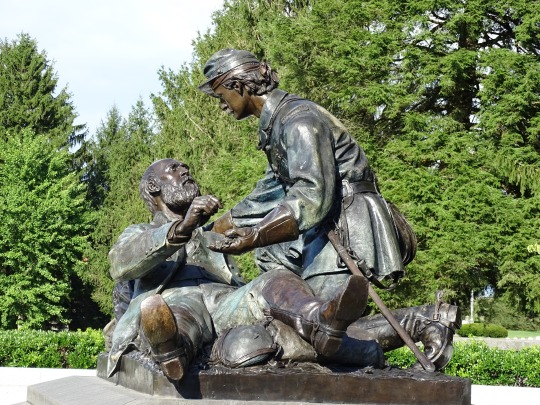
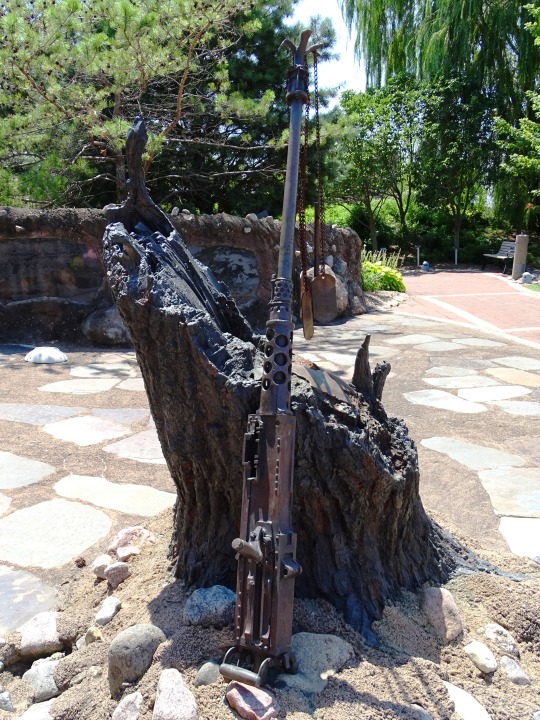
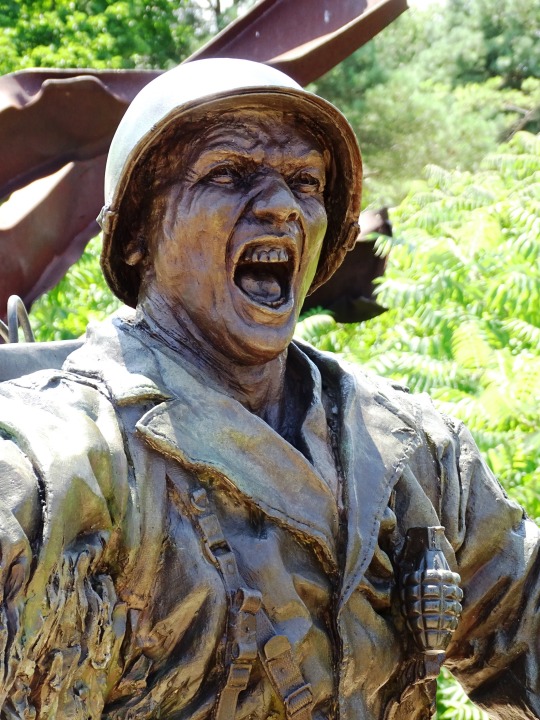
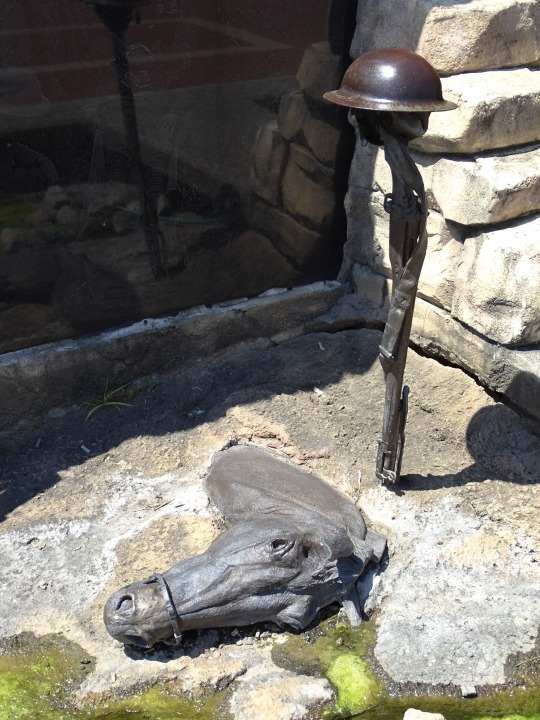
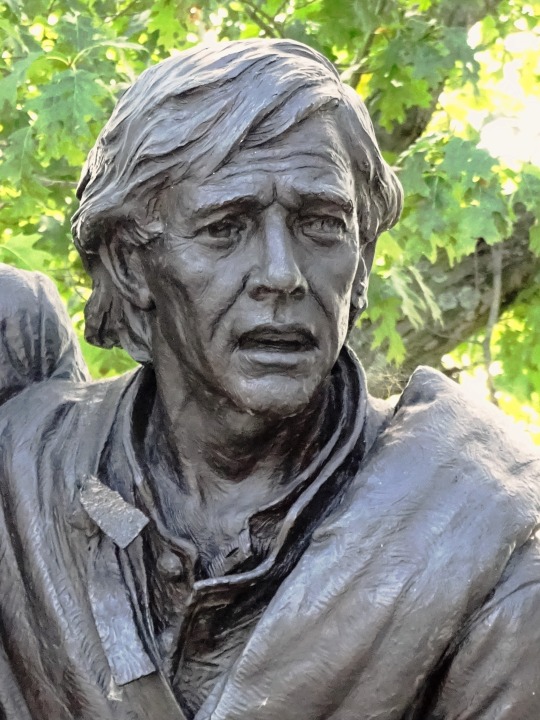
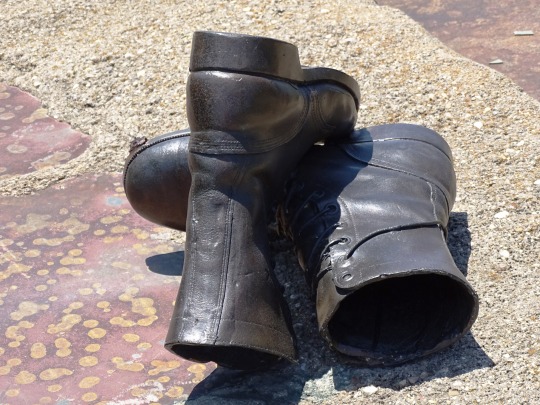
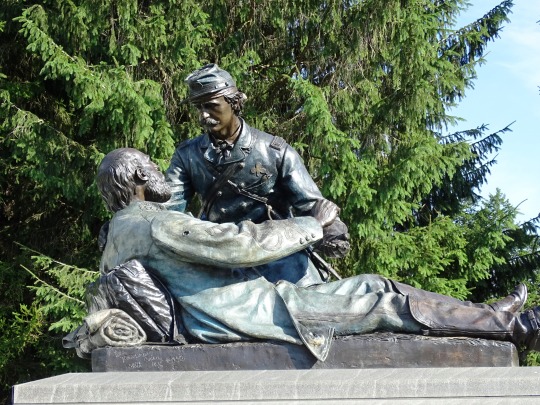
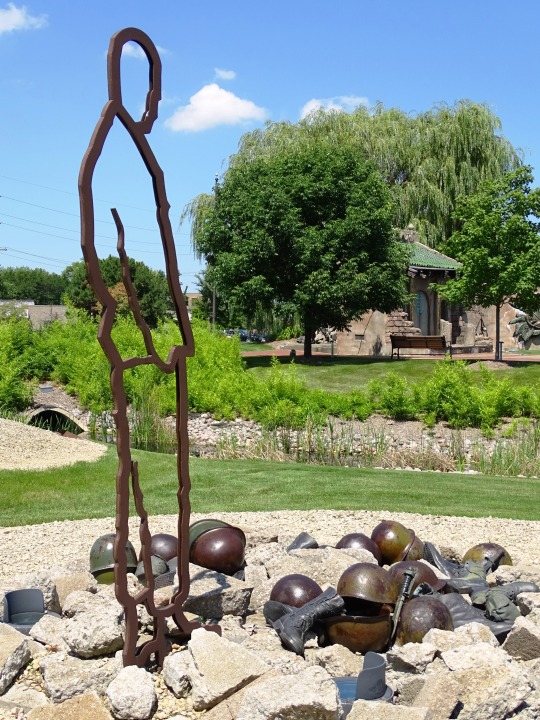
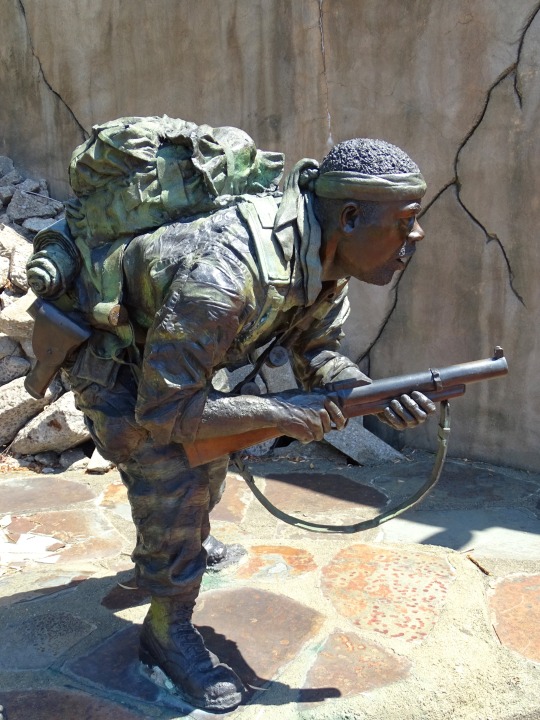
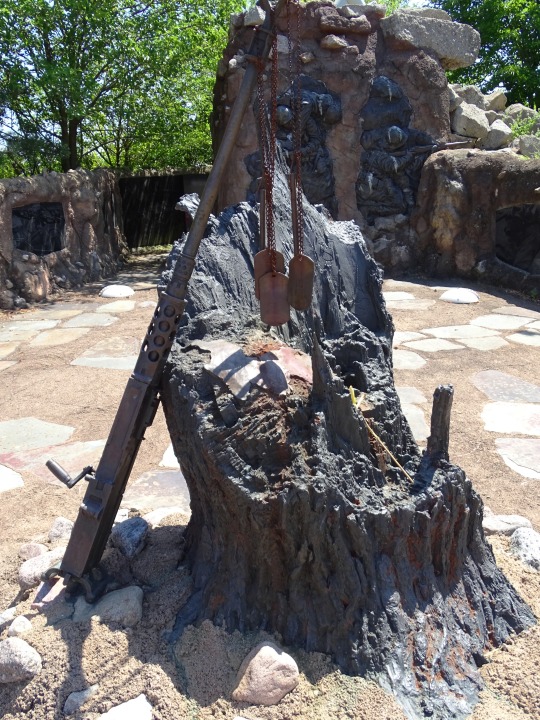
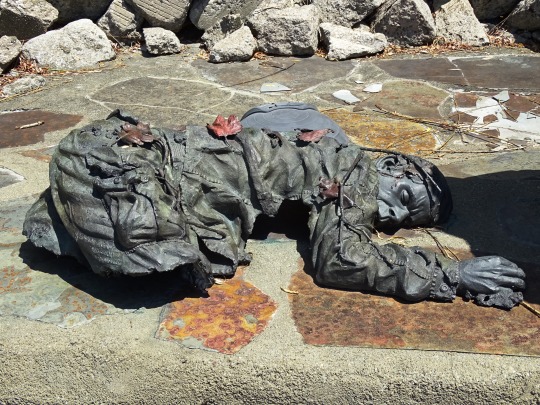
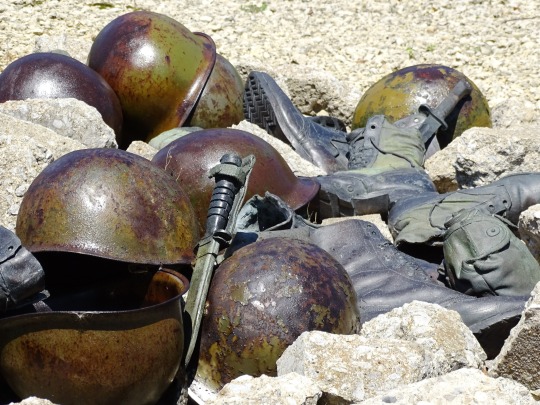
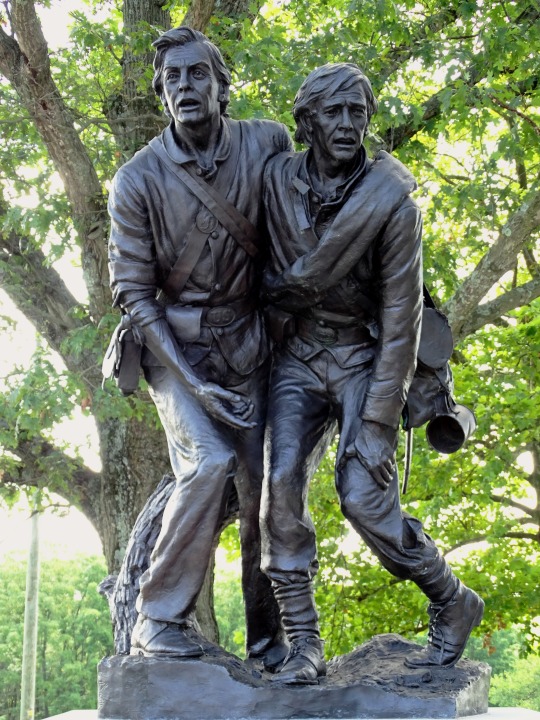
Memorial Day
Memorial Day on May 27 conjures images of hamburgers, hot dogs, swimming pools, and summertime for many Americans. But the last Monday in May serves, most importantly, as a time to honor those who died while fighting in the U.S. Armed Forces. It’s a holiday steeped in somber American history and tradition. The day actually began as “Decoration Day,” following the Civil War, when mourners placed flowers on the graves of Union and Confederate soldiers. Yes, Memorial Day has also come to signify the “unofficial” start of summer, but let’s remember the heroes who made it all possible.
When is Memorial Day 2024?
Men and women who’ve served and sacrificed their lives in the U.S. Armed Forces are honored on Memorial Day on May 27.
History of Memorial Day
The Civil War ended in the spring of 1865 when Robert E. Lee surrendered the last major Confederate army to Ulysses S. Grant at the Appomattox Court House on April 9. Over 620,000 soldiers died in the four-year conflict. General John A. Logan of the Grand Army of the Republic (an organization of Union veterans) would eventually select May 30, 1868, as a day to pay tribute to the fallen:
“The 30th of May, 1868, is designated for the purpose of strewing with flowers, or otherwise decorating the graves of comrades who died in defense of their country during the late rebellion, and whose bodies now lie in almost every city, village, and hamlet churchyard in the land…”
Logan apparently chose May 30 because flowers would be in bloom all over the country. By the end of the 19th century, Memorial Day ceremonies were being held on May 30 throughout the nation. States passed proclamations, and the Army and Navy adopted rules for proper observance at their facilities.
The crowd attending the first Memorial Day ceremony at Arlington National Cemetery was approximately the same size as those that attend today’s observance — about 5,000 people. Small American flags were placed on each grave — a tradition still followed at many national cemeteries today. In recent years, the custom has grown in many families to decorate the graves of all departed loved ones.
By 1890, each Northern state had made Decoration Day an official holiday. But this was not the case in the South, where states continued to honor their dead on separate days until after the First World War.
The May 30 date held for decades. But, in 1968, Congress passed the Uniform Monday Holiday Act, which established Memorial Day as the last Monday in May in order to create a three-day weekend for federal employees. The change took place in 1971. The same law also declared Memorial Day a federal holiday.
Memorial Day timeline
1864 Beginning of a Tradition
Women from Pennsylvania place flowers on the graves of fallen soldiers after the Battle of Gettysburg.
May 5, 1866 Birthplace of Memorial Day
Waterloo, New York, begins hosting an annual community service in remembrance of soldiers whose lives were lost.
May 5, 1868 It’s Official
Major General John A. Logan issues General Order No.11, making the day official.
2020 Virtual Solidarity
The organization American Veterans (AMVETS) holds a virtual motorcycle rally in honor of Memorial Day.
Traditions of the Day
Many Americans observe Memorial Day by visiting cemeteries or memorials, holding family gatherings, and participating in parades. It’s the three-day weekend that kicks off the summer season and the time for hanging out at the beach and lakes, and barbecuing with friends and family. But Memorial Day is also the most solemn American holiday — a day to remember those who made the ultimate sacrifice while defending their nation.
Towns and cities across the country host grand Memorial Day parades every year, often featuring senior veterans and military personnel. Some of the biggest parades take place in New York, Chicago, and Washington, D.C. Cemeteries and memorials are also visited by Americans, with some citizens wearing or holding red poppies to symbolize those who have fallen in war. This tradition has been around since World War I. Weekend trips and parties are also arranged to balance out the somberness of the day and welcome the summer.
By the Numbers
620,000 – the number of soldiers who died on both sides of the Civil War.
1868 – the year when President James Garfield delivered a very long speech on Memorial Day.
2500 – the number of motorcyclists who participated in the first Rolling Thunder rally.
$1.5 billion – the number of dollars typically spent on meat and seafood in preparation for Memorial Day weekend.
60% – the percentage of American households who attend or host a barbecue on this day.
1.5 million – the number of people who watch the National Memorial Day Parade.
900,000 – the number of people who gathered for the Rolling Thunder Memorial Day motorcycle rally in 2019.
260,000 – the number of graves at Arlington National Cemetery adorned with flags in 2019.
45 million – the number of men and women who have served in a time of war for the U.S.
3 P.M. – the time of day when a moment of silence is observed by Americans throughout the country on this day.
How to Observe Memorial Day
Pay your respects
Participate in the National Moment of Remembrance
Fly the flag
Lay flowers on the grave of a family member or friend who died while serving. If you don't personally know any fallen soldiers, visit a local cemetery anyway. After all, they made the ultimate sacrifice for you.
By doing so, you'll be joining millions of Americans in national unity to honor Memorial Day for what it truly is — a day to remember those who laid down their lives in service of their country and its citizens.
If you have an American flag at home, be sure to fly it at half-mast until noon, then raise it to full mast for the rest of the day. The practice of lowering and then raising the flag has been observed for over 100 years to symbolize America's persistence in the face of loss.
5 CREATIVE WAYS TO DECORATE FOR MEMORIAL DAY
Unfurl those flags
Line your walkway with mini flags
Red, white, and blue layered cake
Stars and Stripes windsocks
Symbolic flowers
Often people store their American flags and raise them only during patriotic holidays. This is definitely one of those days.
Nothing honors our deceased veterans like dozens (or even hundreds) of flags in your front lawn and entryway.
It’s a decoration you can eat.
It’s festive, fun, and patriotic. Need we say more?
Even if you haven’t lost a loved one who served in the military, you can still honor the fallen with flowers at home. Red, navy, and blue dahlias combined with white rose silk flowers can make a stunning visual combination.
Source
#Maryland State Monument by Lawrence Monroe Ludtke#original photography#Gettysburg National Military Park#Community Veterans Memorial#Munster#Indiana#Pennsylvania#Europe Monument#Pacific Monument#Omri Amrany#A Soldier's Sacrifice by Julie Rotblatt-Amrany#Vietnam Veterans Memorial by Maya Lin#Washington DC#summer 2019#2009#free admission#tourist attraction#landmark#cityscape#Memorial Day#27 May 2024#last Monday in May#MemorialDay#travel#USA#vacation#Friend to Friend Masonic Memorial
1 note
·
View note
Text
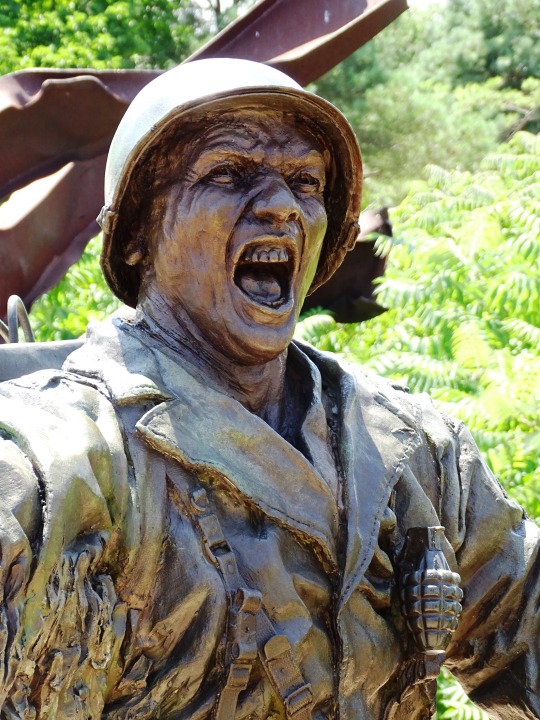
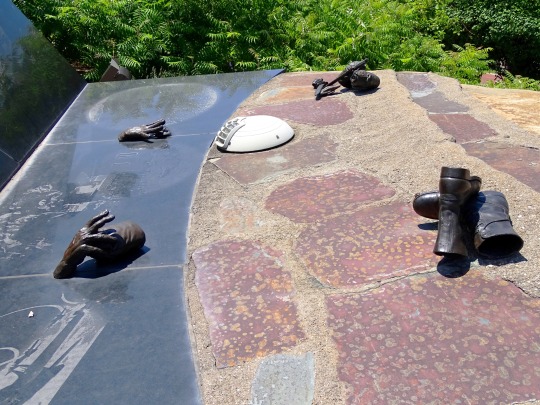

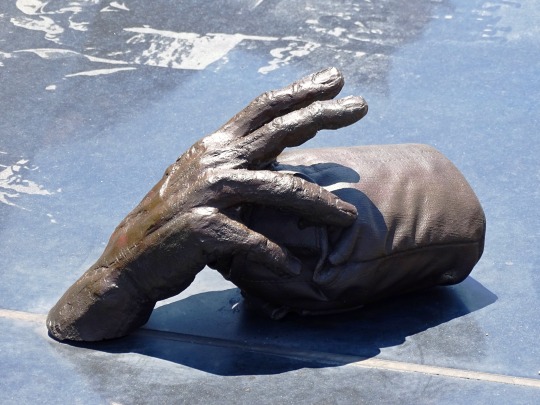
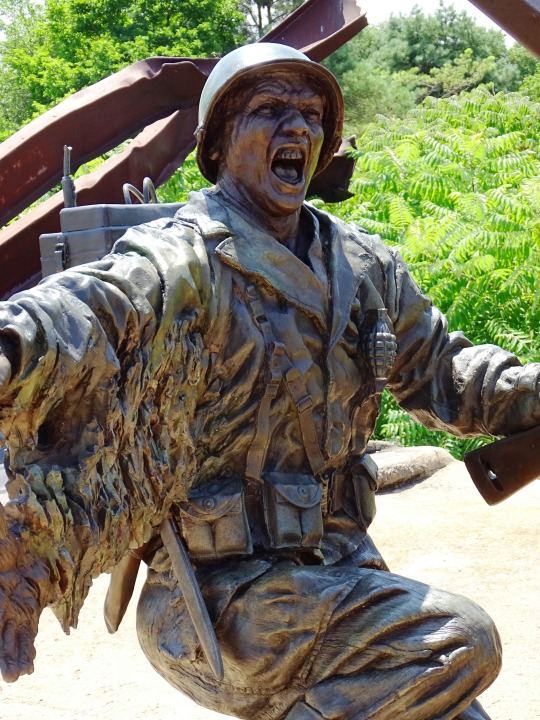
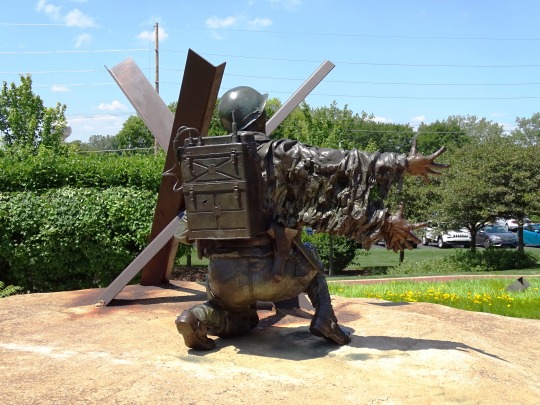


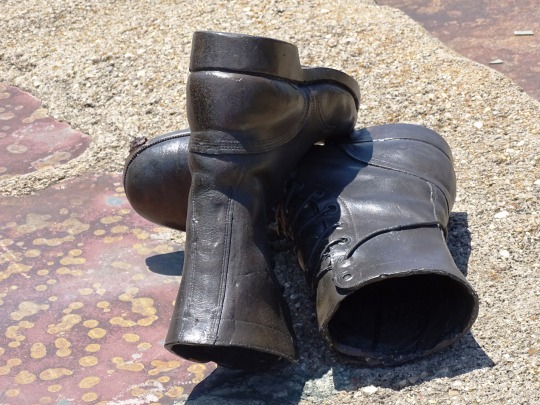
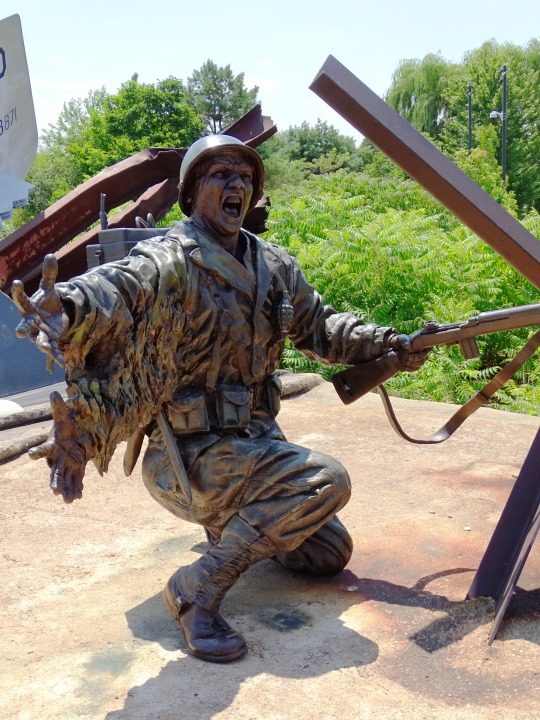
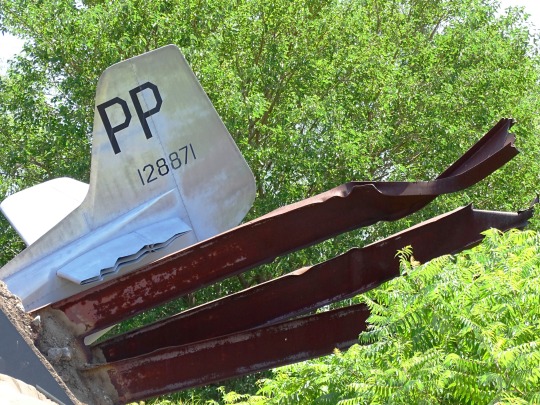
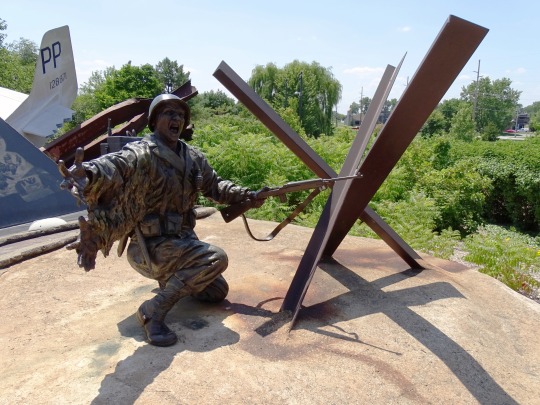
Victory in Europe Day
Victory in Europe Day is observed on May 8 to commemorate when the Allies of World War II formally accepted Germany’s unconditional surrender of its armed forces. Did you know that even after Germany — the architect of the war — surrendered, Japan continued to wage war against the Allied troops? World War II was the costliest war ever; over 75 million lives were lost, cities leveled, and the economy of Europe was devastated. The war began when Hitler’s Germany invaded Poland and ended nearly six years later when Japan surrendered. Victory in Europe Day is celebrated as a public holiday in several European countries and termed V.E. Day and V-E Day in the U.K. and the U.S., respectively.
HISTORY OF VICTORY IN EUROPE DAY
On April 30, 1945, the Allied forces surrounded Germany, tightening the noose around the German army. Realizing the hopelessness of his situation, Hitler killed his newly wedded wife, Eva Braun, and committed suicide in his Berlin bunker. Immediately taking the presidency, Grand Admiral Karl Donitz, Hitler’s successor, began negotiating for a term of surrender with the Allied forces. Chief among his goals was saving as many Germans as possible from being captured by the Soviets.
On May 4, in Luneburg Heath, British Field Marshal Bernard Montgomery accepted the unconditional surrender of German forces in the Netherlands, northwest Germany, and Denmark. On May 7, another unconditional military surrender was signed at SHAEF H.Q. at Reims, between Supreme Allied Commander General Eisenhower and General Alfred Jodl of Germany. The following day, a slightly modified document — the definitive German Instrument of Surrender — was signed in Karlshorst, Berlin, by German Field Marshal William Keitel.
Following the announcement of the German surrender on radio on May 7, the news quickly spread across the western world, and jubilations erupted everywhere, especially in North America and the U.K. The B.B.C. interrupted their program to announce that Victory in Europe Day would be a national holiday. Over one million people trooped out to the streets of the U.K. to celebrate, while in London, people crowded Trafalgar Square, the Mall, and Buckingham Palace. The British Royal Family, joined by Prime Minister Winston Churchill, appeared on the palace’s balcony, waving to the cheering crowds.
In the United States, Victory in Europe Day happened to be the same day as President Harry Truman’s 61st birthday. However, he dedicated the victory to his late predecessor, Franklin D. Roosevelt and the U.S. flag remained at half-mast. Victory in Europe Day was also celebrated in Australia, Paris, and Canada — where a riot broke down and resulted in several deaths.
VICTORY IN EUROPE DAY TIMELINE
April 30,1945 The Suicide of Hitler
During the Battle of Berlin, the city becomes surrounded — so, Hitler kills his wife and commits suicide.
May 4, 1945 The First Act of Surrender
British Field Marshal Bernard Montgomery accepts the unconditional surrender of German forces in the Netherlands, northwest Germany, and Denmark.
May 7, 1945 The Second Act of Surrender
Supreme Allied Commander General Eisenhower accepts the unconditional surrender of German forces from German General Alfred Jodl.
May 8, 1945The German Instrument of Surrender
The definitive German Instrument of Surrender is signed in Berlin by German Field Marshal William Keitel.
August 14, 1945 The End of the War
Japan agrees to surrender to the Allied forces and formally signs an agreement the following month.
VICTORY IN EUROPE DAY FAQS
Is Victory in Europe Day celebrated in Germany?
Victory in Europe Day is generally viewed in Germany as a day to commemorate those that died during the war. However, it’s also a day to renew their promises of preventing such events from happening again.
Who celebrates Victory in Europe Day?
Victory in Europe Day is mainly celebrated by North American and European countries, including Israel and the European Union — celebrated as Europe Day.
How do the French celebrate Victory in Europe Day?
Victory in Europe Day is celebrated with a lot of festivities and fanfare. Church services, parades, ceremonies, monument visitations, and air force flyovers are ways Victory in Europe Day is commemorated in France.
HOW TO OBSERVE VICTORY IN EUROPE DAY
Visit the World War II Memorial
Talk to a World War II veteran
Watch World War II movies or documentaries
The World War II Memorial was built in 2004 to honor those that fought and died during World War II. The memorial is located in Washington D.C. You can visit and take a tour around this place of honor to pay your respects to those that prevented the war from entering our borders.
You can observe Victory in Europe Day by chatting with a WWII veteran about the unfiltered events of the war. There are many of these veterans around, and they can be found at senior homes. Visiting them would allow you to learn a lot and provide you with an opportunity to appreciate them for their sacrifices.
Many films are produced almost every decade, dedicated to the major battles of World War II. You can spend Victory in Europe Day by watching classics like “Stalingrad,” “Dunkirk,” “Dirty Dozen,” “Come and See,” and “Saving Private Ryan.” You can also watch documentaries, such as “Battlefield,” “World At Watt,” and “Russia’s War: Blood Upon the Snow.”
5 IMPORTANT FACTS ABOUT WORLD WAR II
It was between two groups of countries
The Holocaust happened
Some countries remained neutral
It was the bloodiest war
Millions died for not being perfect Germans
World War II was fought between Allied countries — Britain, France, Russia, China, and the U.S. — and Axis nations — Germany, Italy, and Japan.
Hitler’s Germany killed about six million Jewish people during the war.
Spain, Sweden, and Switzerland are examples of countries that never chose a side during the war.
About 75 million people died during the war, including 40 million civilians and 20 million military personnel.
Aside from Jews, Hitler ordered people with disabilities and Gypsies to be killed for not meeting his vision of the best and strongest race.
WHY VICTORY IN EUROPE DAY IS IMPORTANT
It marked the beginning of the end of WWII
It serves as a day of remembrance
It’s a day of reflection
When the German forces surrendered to the Allied troops on Victory in Europe Day, it ended the war on the European theatre, allowing the Allies to concentrate their efforts to win in the Eastern theatre three months later.
Victory in Europe Day is not only a day to celebrate Germany’s surrender but also a day to appreciate the military personnel that fought and died to make it happen.
Victory in Europe Day is a day for every country that participated in World War II, both the instigators and heroes, to reflect on the actions and events that led to the outbreak of war and ensure they don’t repeat themselves.
Source
#lone infantryman on Omaha Beach#Community Veterans Memorial#Indiana#USA#Munster#very impressive#free admission#Omri Amrany#8 May 1945#Victory in Europe Day#European history#V-E Day#VictoryInEuropeDay#WWII#World War Two#World War II#Pacific Monument#Europe Monument#Midwestern USA#Great Lakes Region#original photography#summer 2019#tourist attraction#landmark#travel#vacation#cityscape#anniversary#history
1 note
·
View note
Text
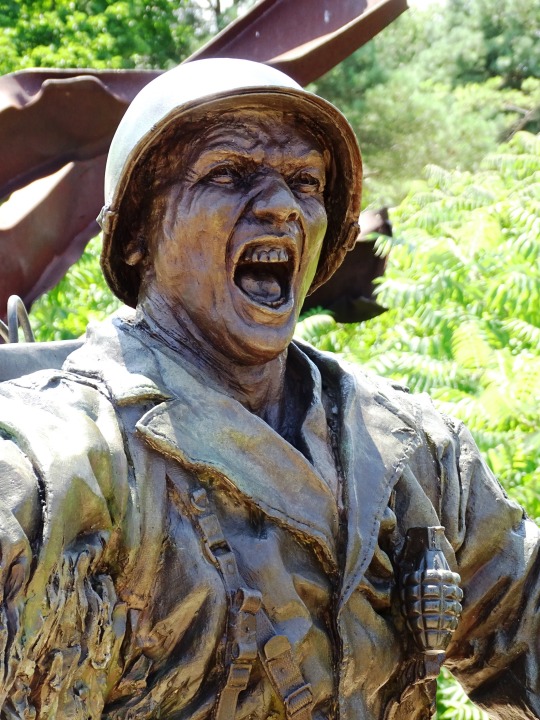
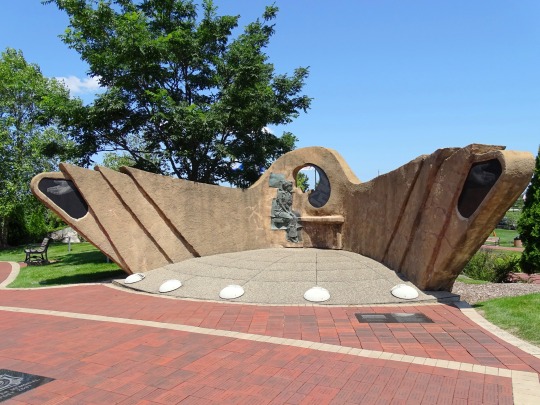
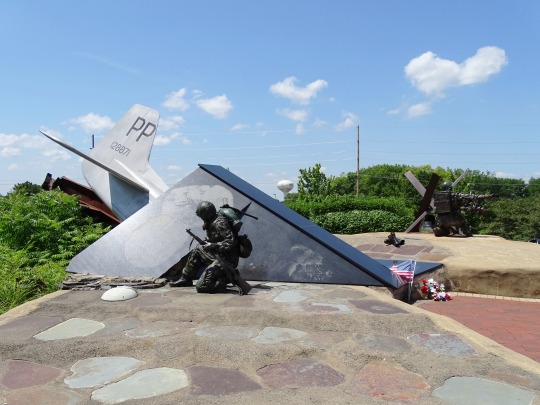
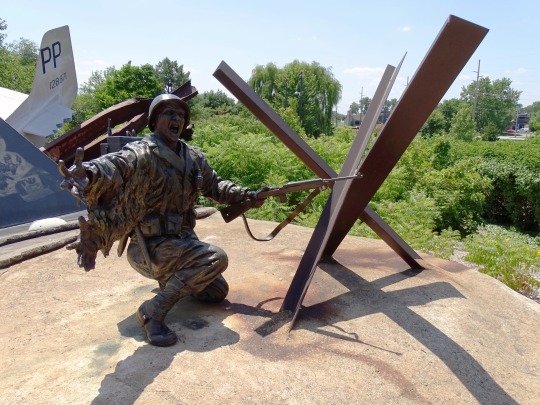

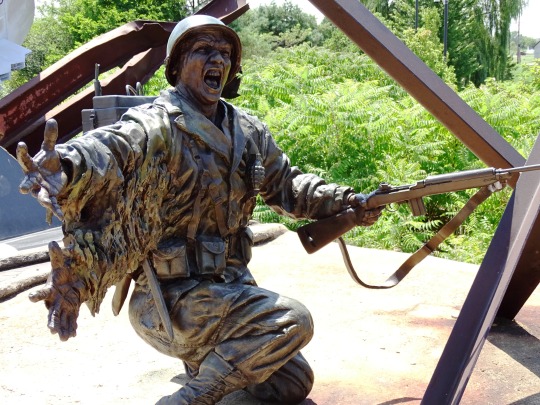
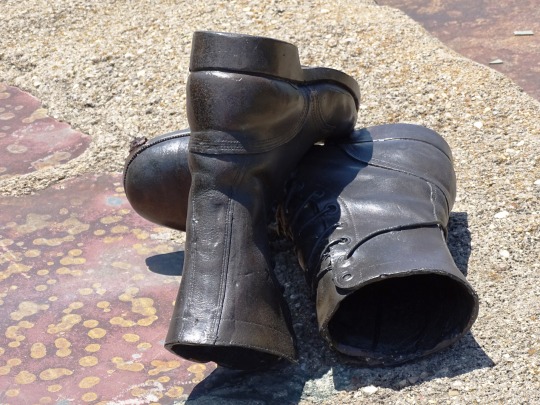
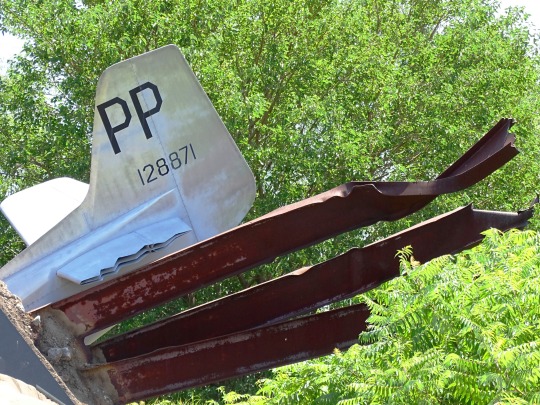
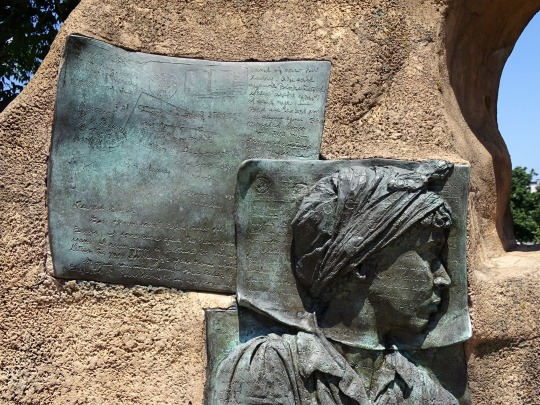
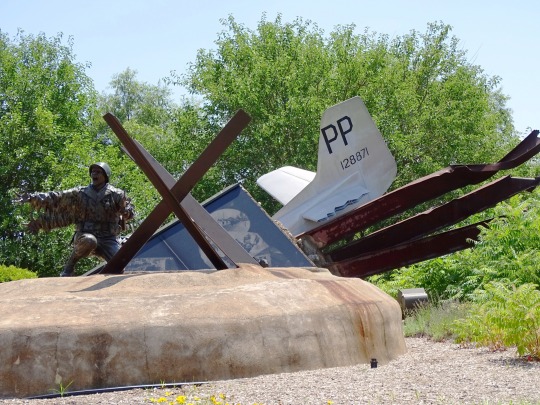
World War II: Nazi Germany and Slovakia invaded Poland, beginning the European phase of World War II on September 1, 1939.
#World War II#Germany#invaded#Poland#start#WWII#WW2#World War Two#1 September 1939#original photography#vacation#travel#tourist attraction#landmark#architecture#Europe Monument by Omri Amrany#Pacific Monument#Community Veterans Memorial#Munster#Indiana#history#anniversary#USA#summer 2019#Home Front Monument
1 note
·
View note
Photo
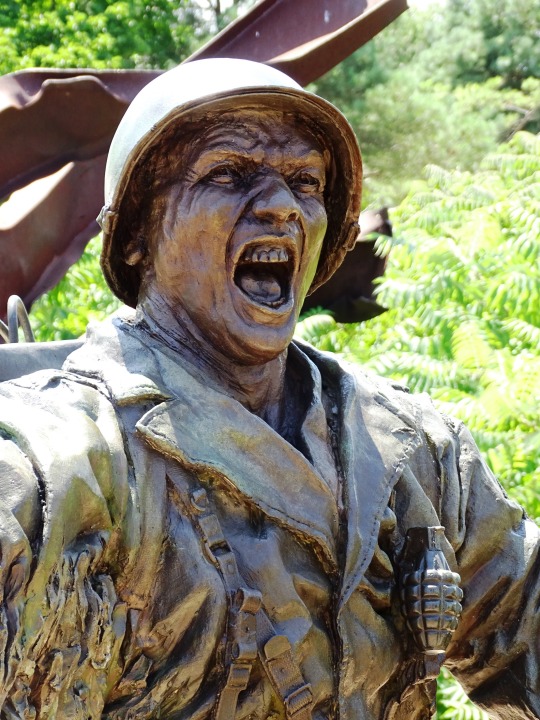

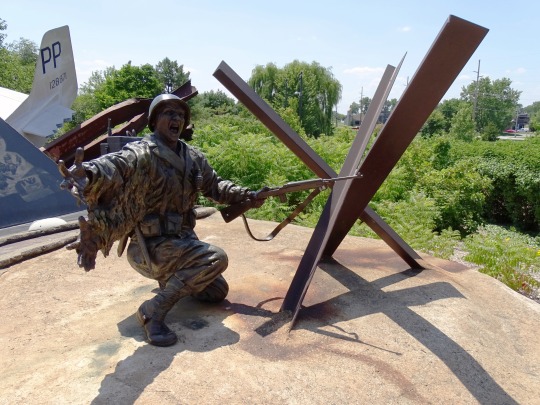
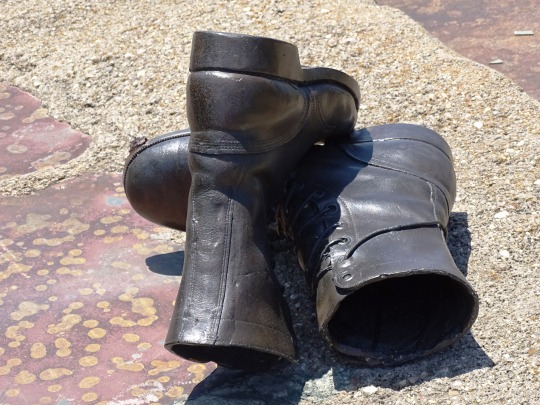




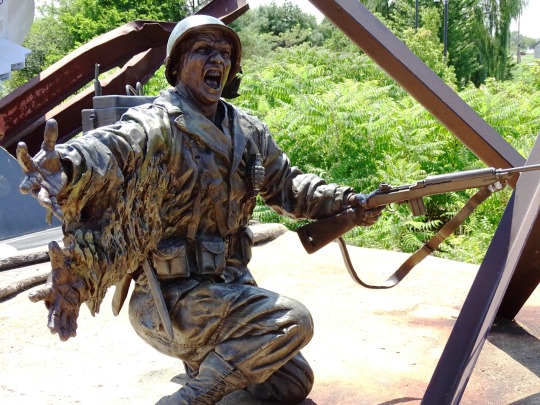
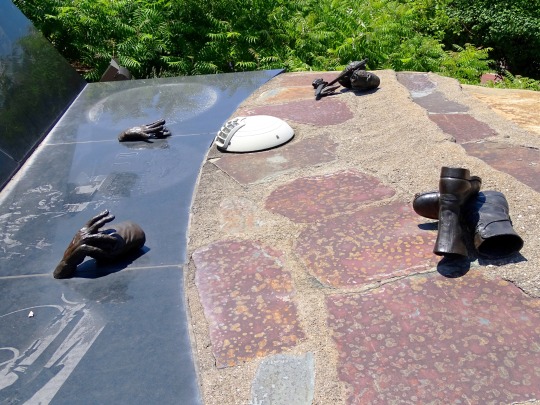
Victory in Europe Day
Victory in Europe Day is observed on May 8 to commemorate when the Allies of World War II formally accepted Germany’s unconditional surrender of its armed forces. Did you know that even after Germany — the architect of the war — surrendered, Japan continued to wage war against the Allied troops? World War II was the costliest war ever; over 75 million lives were lost, cities leveled, and the economy of Europe was devastated. The war began when Hitler’s Germany invaded Poland and ended nearly six years later when Japan surrendered. Victory in Europe Day is celebrated as a public holiday in several European countries and termed V.E. Day and V-E Day in the U.K. and the U.S., respectively.
HISTORY OF VICTORY IN EUROPE DAY
On April 30, 1945, the Allied forces surrounded Germany, tightening the noose around the German army. Realizing the hopelessness of his situation, Hitler killed his newly wedded wife, Eva Braun, and committed suicide in his Berlin bunker. Immediately taking the presidency, Grand Admiral Karl Donitz, Hitler’s successor, began negotiating for a term of surrender with the Allied forces. Chief among his goals was saving as many Germans as possible from being captured by the Soviets.
On May 4, in Luneburg Heath, British Field Marshal Bernard Montgomery accepted the unconditional surrender of German forces in the Netherlands, northwest Germany, and Denmark. On May 7, another unconditional military surrender was signed at SHAEF H.Q. at Reims, between Supreme Allied Commander General Eisenhower and General Alfred Jodl of Germany. The following day, a slightly modified document — the definitive German Instrument of Surrender — was signed in Karlshorst, Berlin, by German Field Marshal William Keitel.
Following the announcement of the German surrender on radio on May 7, the news quickly spread across the western world, and jubilations erupted everywhere, especially in North America and the U.K. The B.B.C. interrupted their program to announce that Victory in Europe Day would be a national holiday. Over one million people trooped out to the streets of the U.K. to celebrate, while in London, people crowded Trafalgar Square, the Mall, and Buckingham Palace. The British Royal Family, joined by Prime Minister Winston Churchill, appeared on the palace’s balcony, waving to the cheering crowds.
In the United States, Victory in Europe Day happened to be the same day as President Harry Truman’s 61st birthday. However, he dedicated the victory to his late predecessor, Franklin D. Roosevelt and the U.S. flag remained at half-mast. Victory in Europe Day was also celebrated in Australia, Paris, and Canada — where a riot broke down and resulted in several deaths.
VICTORY IN EUROPE DAY TIMELINE
April 30,1945 The Suicide of Hitler
During the Battle of Berlin, the city becomes surrounded — so, Hitler kills his wife and commits suicide.
May 4, 1945 The First Act of Surrender
British Field Marshal Bernard Montgomery accepts the unconditional surrender of German forces in the Netherlands, northwest Germany, and Denmark.
May 7, 1945 The Second Act of Surrender
Supreme Allied Commander General Eisenhower accepts the unconditional surrender of German forces from German General Alfred Jodl.
May 8, 1945The German Instrument of Surrender
The definitive German Instrument of Surrender is signed in Berlin by German Field Marshal William Keitel.
August 14, 1945 The End of the War
Japan agrees to surrender to the Allied forces and formally signs an agreement the following month.
VICTORY IN EUROPE DAY FAQS
Is Victory in Europe Day celebrated in Germany?
Victory in Europe Day is generally viewed in Germany as a day to commemorate those that died during the war. However, it’s also a day to renew their promises of preventing such events from happening again.
Who celebrates Victory in Europe Day?
Victory in Europe Day is mainly celebrated by North American and European countries, including Israel and the European Union — celebrated as Europe Day.
How do the French celebrate Victory in Europe Day?
Victory in Europe Day is celebrated with a lot of festivities and fanfare. Church services, parades, ceremonies, monument visitations, and air force flyovers are ways Victory in Europe Day is commemorated in France.
HOW TO OBSERVE VICTORY IN EUROPE DAY
Visit the World War II Memorial
Talk to a World War II veteran
Watch World War II movies or documentaries
The World War II Memorial was built in 2004 to honor those that fought and died during World War II. The memorial is located in Washington D.C. You can visit and take a tour around this place of honor to pay your respects to those that prevented the war from entering our borders.
You can observe Victory in Europe Day by chatting with a WWII veteran about the unfiltered events of the war. There are many of these veterans around, and they can be found at senior homes. Visiting them would allow you to learn a lot and provide you with an opportunity to appreciate them for their sacrifices.
Many films are produced almost every decade, dedicated to the major battles of World War II. You can spend Victory in Europe Day by watching classics like “Stalingrad,” “Dunkirk,” “Dirty Dozen,” “Come and See,” and “Saving Private Ryan.” You can also watch documentaries, such as “Battlefield,” “World At Watt,” and “Russia’s War: Blood Upon the Snow.”
5 IMPORTANT FACTS ABOUT WORLD WAR II
It was between two groups of countries
The Holocaust happened
Some countries remained neutral
It was the bloodiest war
Millions died for not being perfect Germans
World War II was fought between Allied countries — Britain, France, Russia, China, and the U.S. — and Axis nations — Germany, Italy, and Japan.
Hitler’s Germany killed about six million Jewish people during the war.
Spain, Sweden, and Switzerland are examples of countries that never chose a side during the war.
About 75 million people died during the war, including 40 million civilians and 20 million military personnel.
Aside from Jews, Hitler ordered people with disabilities and Gypsies to be killed for not meeting his vision of the best and strongest race.
WHY VICTORY IN EUROPE DAY IS IMPORTANT
It marked the beginning of the end of WWII
It serves as a day of remembrance
It’s a day of reflection
When the German forces surrendered to the Allied troops on Victory in Europe Day, it ended the war on the European theatre, allowing the Allies to concentrate their efforts to win in the Eastern theatre three months later.
Victory in Europe Day is not only a day to celebrate Germany’s surrender but also a day to appreciate the military personnel that fought and died to make it happen.
Victory in Europe Day is a day for every country that participated in World War II, both the instigators and heroes, to reflect on the actions and events that led to the outbreak of war and ensure they don’t repeat themselves.
Source
#lone infantryman on Omaha Beach#Community Veterans Memorial#Indiana#USA#Munster#very impressive#free admission#Omri Amrany#8 May 1945#Victory in Europe Day#European history#V-E Day#VictoryInEuropeDay#WWII#World War Two#World War II#Pacific Monument#Europe Monument#Midwestern USA#Great Lakes Region#original photography#summer 2019#tourist attraction#landmark
1 note
·
View note
Photo




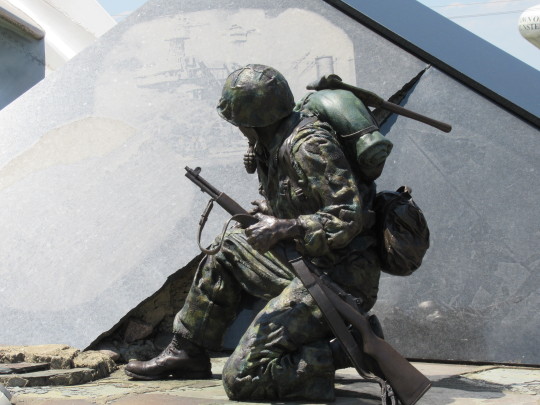
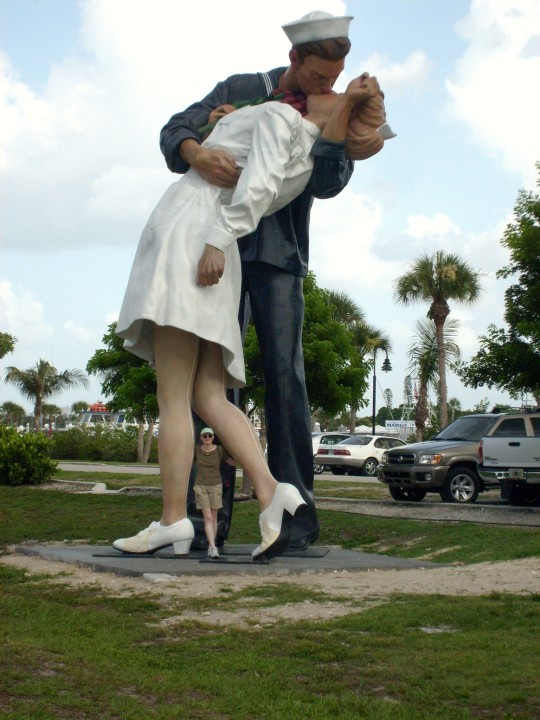

V-J/V-P Day
Following the atomic bombings of Hiroshima and Nagasaki, Emperor Hirohito announced Japan’s acceptance to the Potsdam Declaration and surrendered on 15th August 1945, effectively marking the end of World War II. However, the official surrender ceremony did not occur until over two weeks later, and thus President Truman marked 2nd September as the official V-J Day.
Learn about V-J Day
It is estimated that anywhere from 60 to 80 million people died during World War II, on all sides of the conflict. V-J Day should be seen as not only the celebration of the defeat of the tyrannical Japanese government of the time, but also the remembrance of those who lost their lives.
There are a number of different ways that people refer to V-J Day. This includes V-P Day, Victory in the Pacific Day, and Victory over Japan Day. No matter how people refer to this day, what matters is that it is the day on which Imperial Japan surrendered in the Second World War, marking the end of the war.
Interestingly, there are really three different dates that can be considered the date of surrender. The first is the 15th of August in 1945, which is when the announcement of Japan’s surrender was made. However, in some parts of the world, including the United States, this was actually the 14th of August in 1945 because of the time differences.
As mentioned, there is also the date that the official document of surrender was signed, which was the 2nd of September in 1945. This is when the Second World War was officially ended.
Because of this, V-J Day is celebrated on different dates throughout the world. While the official US commemoration occurs on the 2nd of September. In the United Kingdom, for example, they actually celebrate V-J Day on the 15th of August.
History of V-J Day
In order to understand the history of V-J Day, we need to delve deeper into the history of the war and the events that happened in the build-up to this date. On both the 6th and the 9th of August, in 1945, the United States dropped atomic bombs on both Nagasaki and Hiroshima. The Soviet Union also declared war on Japan on the 9th of August as well. A day later, on the 10th of August, the government in Japan communicated that it intended to surrender under the Potsdam Declaration terms.
Celebrations around the world started early when they heard that Japan intended to surrender. In Paris, Frenchmen and Americans paraded and sang “Don’t Fence Me In” on Champs-Élysées. On the streets of London, on Regent Street, allied soldiers danced in a conga line.
It was six days later, on the 15th of August, a little bit after noon Japan Standard Time, that it was announced that Japan had accepted the Potsdam Declaration. Emperor Hirohito made the announcement over the radio to the people of Japan. Once the declaration had been signed, the celebrations across the world really ramped up.
In fact, in Life Magazine, they reported the following about Americans celebrating:
It was “as if joy had been rationed and saved up for the three years, eight months and seven days since Sunday, Dec. 7, 1941”
There were a number of different terms that were included within the declaration. This included the following:
“We do not intend that the Japanese shall be enslaved as a race or destroyed as a nation, but stern justice shall be meted out to all war criminals, including those who have visited cruelties upon our prisoners.”
“The Japanese military forces, after being completely disarmed, shall be permitted to return to their homes with the opportunity to lead peaceful and productive lives.”
“Japanese sovereignty shall be limited to the islands of Honshu, Hokkaido, Kyushu, Shikoku, and such minor islands as we determine.”
Why not take a look at the Potsdam Declaration in full to learn more about V-J Day?
How to celebrate V-J Day
There are a lot of different ways that you can celebrate V-J Day. A lot of people have street parties and celebrate with their neighbors and their friends and families. This is something that people enjoy all over the world. It is an opportunity to be patriotic and show your love for the country you were born in. People like to hang up posters and bunting with their national flags, as well as enjoying traditional food and alcohol. What better excuse to have a party?
Of course, we cannot mention V-J Day without paying tribute to all of the men and women who lost their lives during World War Two. There are many different memorials and marks of honor that go on around the world on this day. As individuals, it is important that we all take a moment to reflect on those brave people who went to war for their country, with some never returning. Every year, it helps to learn more about the war and about the people who lost their lives. Pay honor to them and their families by researching these people as individuals and sparing some time to think about them.
You can also spend V-J Day learning more about the war. After all, there were many battles that were fought, and there are many documents, textbooks, and research papers on the war and the build-up of it. After all, years and years were spent in battle, and so there is a lot to read about. Enrich your knowledge so that you can have a better understanding of what the men and the women of your country went through during this period.
You can also learn more about the Japanese surrender. The start of the surrender can probably be dated back to the Battle of Okinawa, which started on the 1st of April and ended on the 21st of June in 1945. During this battle, there were more than 117,000 Japanese casualties, and over 82,000 U.S. casualties. It is also estimated that approximately one-fourth of the civilian population of Okinawan died, with a lot of people dying in mass suicides that the Imperial Japanese Army had organized. A month later, on the 26th of July, the Potsdam Declaration was issued. Truman stated the following to Japan:
“Surrender or suffer prompt and utter destruction.”
At the time, the declaration was rejected, but as we all know today, it then came to be accepted a month later.
It is important to remember that V-J Day is about more than just victory, though. We should think about all of the men and women, on both sides of the battle, who lost their lives, as well as the innocent civilians who were caught up in the middle of a horrific war. On V-J Day, we salute you.
Source
#Unconditional Surrender by Seward Johnson#Sarasota#Florida#travel#USA#Eduardo Kobra’s V-J Day in Times Square by Alfred Eisenstaed Mural#New York City#Pacific Monument by Omri Amrany#Munster#Indiana#Community Veterans Memorial#WW2#WWII#World War II#World War Two#original photography#anniversary#2 September 1945#V-J Day#V-P Day#military history
11 notes
·
View notes
Photo



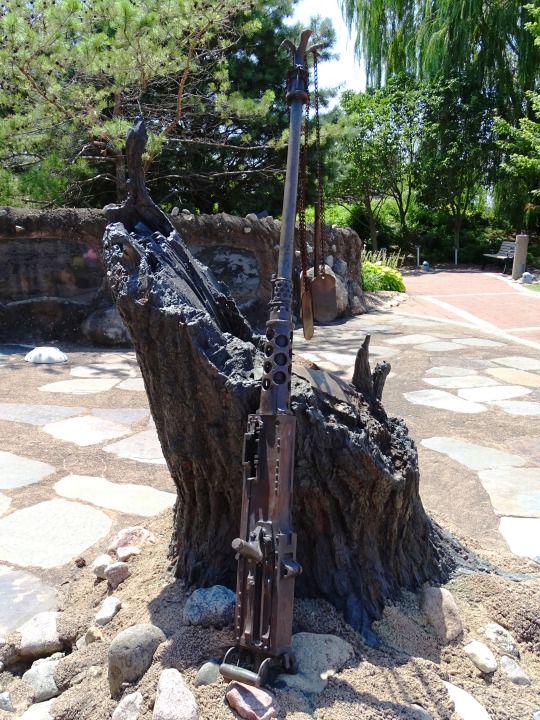


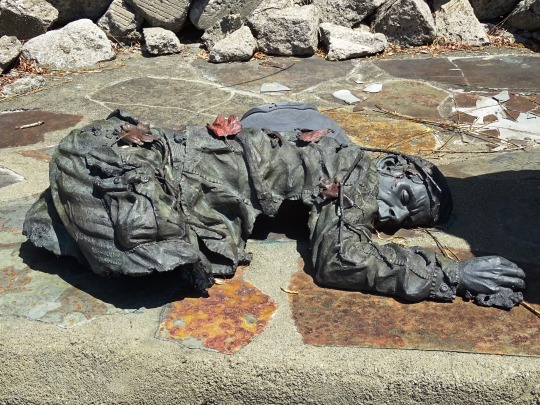


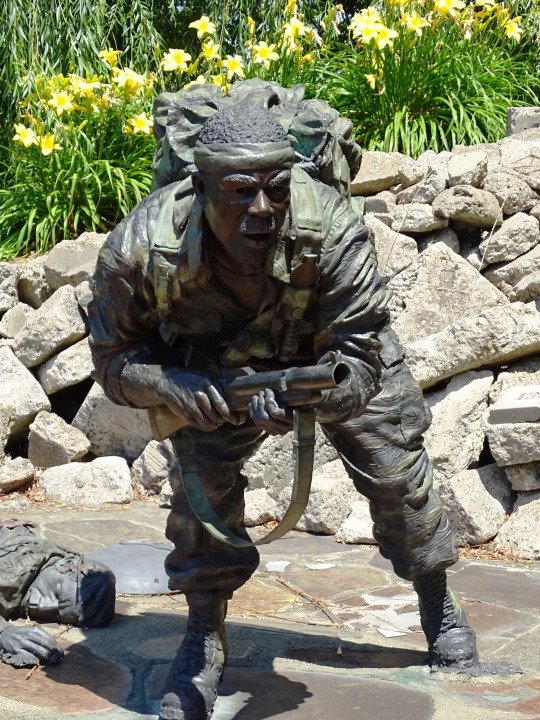
Memorial Day
Memorial Day on May 30 conjures images of hamburgers, hot dogs, swimming pools, and summertime for many Americans. But the last Monday in May serves, most importantly, as a time to honor those who died while fighting in the U.S. Armed Forces. It’s a holiday steeped in somber American history and tradition. The day actually began as “Decoration Day,” following the Civil War, when mourners placed flowers on the graves of Union and Confederate soldiers. Yes, Memorial Day has also come to signify the “unofficial” start of summer, but let’s remember the heroes who made it all possible.
When is Memorial Day 2022?
Men and women who’ve served and sacrificed their lives in the U.S. Armed Forces are honored on Memorial Day on May 30.
History of Memorial Day
The Civil War ended in the spring of 1865 when Robert E. Lee surrendered the last major Confederate army to Ulysses S. Grant at the Appomattox Court House on April 9. Over 620,000 soldiers died in the four-year conflict. General John A. Logan of the Grand Army of the Republic (an organization of Union veterans) would eventually select May 30, 1868, as a day to pay tribute to the fallen:
“The 30th of May, 1868, is designated for the purpose of strewing with flowers, or otherwise decorating the graves of comrades who died in defense of their country during the late rebellion, and whose bodies now lie in almost every city, village, and hamlet churchyard in the land…”
Logan apparently chose May 30 because flowers would be in bloom all over the country. By the end of the 19th century, Memorial Day ceremonies were being held on May 30 throughout the nation. States passed proclamations, and the Army and Navy adopted rules for proper observance at their facilities.
The crowd attending the first Memorial Day ceremony at Arlington National Cemetery was approximately the same size as those that attend today’s observance — about 5,000 people. Small American flags were placed on each grave — a tradition still followed at many national cemeteries today. In recent years, the custom has grown in many families to decorate the graves of all departed loved ones.
By 1890, each Northern state had made Decoration Day an official holiday. But this was not the case in the South, where states continued to honor their dead on separate days until after the First World War.
The May 30 date held for decades. But, in 1968, Congress passed the Uniform Monday Holiday Act, which established Memorial Day as the last Monday in May in order to create a three-day weekend for federal employees. The change took place in 1971. The same law also declared Memorial Day a federal holiday.
Memorial Day timeline
1864 Beginning of a Tradition
Women from Pennsylvania place flowers on the graves of fallen soldiers after the Battle of Gettysburg.
May 5, 1866 Birthplace of Memorial Day
Waterloo, New York, begins hosting an annual community service in remembrance of soldiers whose lives were lost.
May 5, 1868 It’s Official
Major General John A. Logan issues General Order No.11, making the day official.
2020 Virtual Solidarity
The organization American Veterans (AMVETS) holds a virtual motorcycle rally in honor of Memorial Day.
Traditions of the Day
Many Americans observe Memorial Day by visiting cemeteries or memorials, holding family gatherings, and participating in parades. It’s the three-day weekend that kicks off the summer season and the time for hanging out at the beach and lakes, and barbecuing with friends and family. But Memorial Day is also the most solemn American holiday — a day to remember those who made the ultimate sacrifice while defending their nation.
Towns and cities across the country host grand Memorial Day parades every year, often featuring senior veterans and military personnel. Some of the biggest parades take place in New York, Chicago, and Washington, D.C. Cemeteries and memorials are also visited by Americans, with some citizens wearing or holding red poppies to symbolize those who have fallen in war. This tradition has been around since World War I. Weekend trips and parties are also arranged to balance out the somberness of the day and welcome the summer.
By the Numbers
620,000 – the number of soldiers who died on both sides of the Civil War.
1868 – the year when President James Garfield delivered a very long speech on Memorial Day.
2500 – the number of motorcyclists who participated in the first Rolling Thunder rally.
$1.5 billion – the number of dollars typically spent on meat and seafood in preparation for Memorial Day weekend.
60% – the percentage of American households who attend or host a barbecue on this day.
1.5 million – the number of people who watch the National Memorial Day Parade.
900,000 – the number of people who gathered for the Rolling Thunder Memorial Day motorcycle rally in 2019.
260,000 – the number of graves at Arlington National Cemetery adorned with flags in 2019.
45 million – the number of men and women who have served in a time of war for the U.S.
3 P.M. – the time of day when a moment of silence is observed by Americans throughout the country on this day.
How to Observe Memorial Day
Pay your respects
Participate in the National Moment of Remembrance
Fly the flag
Lay flowers on the grave of a family member or friend who died while serving. If you don't personally know any fallen soldiers, visit a local cemetery anyway. After all, they made the ultimate sacrifice for you.
By doing so, you'll be joining millions of Americans in national unity to honor Memorial Day for what it truly is — a day to remember those who laid down their lives in service of their country and its citizens.
If you have an American flag at home, be sure to fly it at half-mast until noon, then raise it to full mast for the rest of the day. The practice of lowering and then raising the flag has been observed for over 100 years to symbolize America's persistence in the face of loss.
5 CREATIVE WAYS TO DECORATE FOR MEMORIAL DAY
Unfurl those flags
Line your walkway with mini flags
Red, white, and blue layered cake
Stars and Stripes windsocks
Symbolic flowers
Often people store their American flags and raise them only during patriotic holidays. This is definitely one of those days.
Nothing honors our deceased veterans like dozens (or even hundreds) of flags in your front lawn and entryway.
It’s a decoration you can eat.
It’s festive, fun, and patriotic. Need we say more?
Even if you haven’t lost a loved one who served in the military, you can still honor the fallen with flowers at home. Red, navy, and blue dahlias combined with white rose silk flowers can make a stunning visual combination.
Source
#Julie Rotblatt-Amrany#Memorial Day#MemorialDay#30 May 2022#USA#Munster#Indiana#Community Veterans Memorial#sculpture#free admission#Gettysburg National Military Park#Gettysburg Battlefield Historic District#vacation#Pennsylvania#summer 2019#2009#Washington DC#Lawrence Monroe Ludtke#Maryland State Monument#Pacific Monument by Omri Amrany#Korean War Monument#A Soldier's Sacrifice by Julie Rotblatt-Amrany#Vietnam Veterans Memorial#Maya Lin#last Monday in May
6 notes
·
View notes
Photo
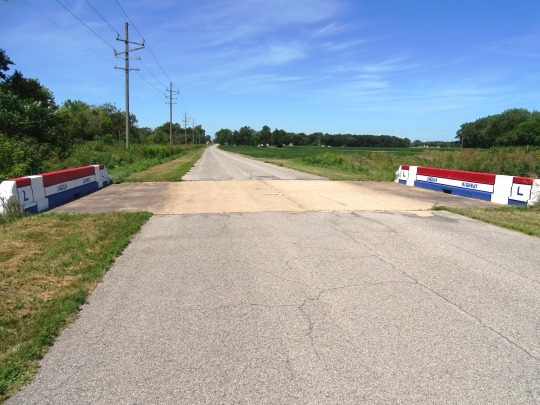
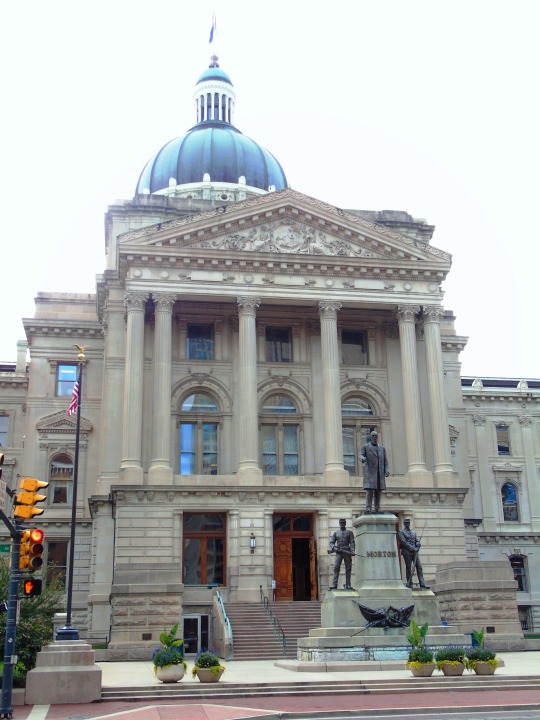
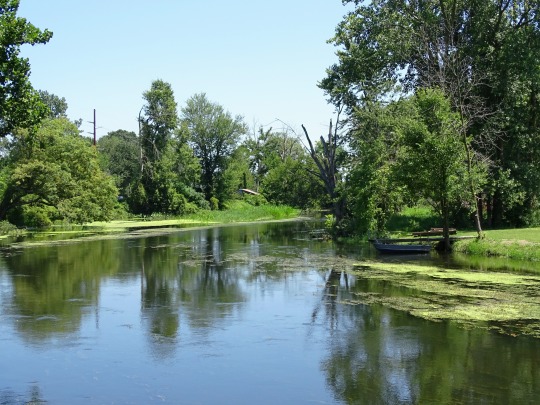
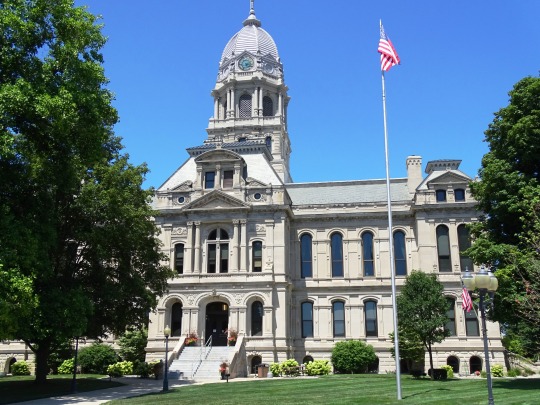






Indiana became the 19th U.S. state on December 11, 1816.
#Hanna#Lincoln Highway#landscape#cityscape#summer 2019#2016#USA#travel#vacation#Indiana#19 US state#11 December 1816#US history#original photography#Tippecanoe River#Warsaw#Munster#Pacific Monument by Omri Amrany#Community Veterans Memorial#Wolf Lake Memorial Park#Whiting#Old Chinworth Bridge#Indy#Indianapolis#Indiana State House#Soldiers' and Sailors' Monument by Bruno Schmitz#Ohio River#Switzerland County
1 note
·
View note
Photo










Victory in Europe Day
Victory in Europe Day, generally known as VE Day (United Kingdom) or V-E Day (US), is a day celebrating the formal acceptance by the Allies of World War II of Nazi Germany’s unconditional surrender of its armed forces on Tuesday, 8 May 1945, marking the end of World War II in Europe. VE Day is celebrated across Western European states on 8 May, with several countries observing public holidays on the day each year, variously called Victory Over Fascism Day, Liberation Day or simply Victory Day.
Russia, Belarus, and Serbia celebrate on 9 May, as do several former Soviet bloc countries. Israel also marks VE Day on 9 May, as a result of the large number of immigrants from the former Soviet bloc, although it is not a public holiday. The term VE Day existed as early as September 1944, in anticipation of victory.
Source
#lone infantryman on Omaha Beach#Victory in Europe Day#VE Day#V-E Day#8 May 1945#anniversary#history#original photography#Munster#USA#Community Veterans Memorial#free admission#Indiana#tourist attraction#Pacific Monument by Omri Amrany#impressive#WWII#World War Two#World War II#landmark#park#sculpture#public art
0 notes
Photo










Japan accepted the Allied terms of surrender in World War II and the Emperor records the Imperial Rescript on Surrender on August 14, 1945 (August 15 in Japan Standard Time).
#Pacific Monument#Community Veterans Memorial#Munster#Indiana#USA#Omri Amrany#Surrender#Japan#14 August 1945#15 August 1945#WW II#World War Two#World War II#original photography#summer 2019#travel#vacation#Fort Columbia Historical State Park#Washington#Sarasota#Florida#Unconditional Surrender by Seward Johnson#Eduardo Kobra#mural#New York City#V-J Day in Times Square by Alfred Eisenstaed#Corpus Christi#USS Lexington Museum on the Bay#USS Lexington (CV-16)#Chicago WWII Submarine Veterans Memorial
5 notes
·
View notes
Photo










Victory in Europe Day
Victory in Europe Day, generally known as VE Day (United Kingdom) or V-E Day (US), is a day celebrating the formal acceptance by the Allies of World War II of Nazi Germany's unconditional surrender of its armed forces on Tuesday, 8 May 1945, marking the end of World War II in Europe. VE Day is celebrated across Western European states on 8 May, with several countries observing public holidays on the day each year, variously called Victory Over Fascism Day, Liberation Day or simply Victory Day.
Russia, Belarus, and Serbia celebrate on 9 May, as do several former Soviet bloc countries. Israel also marks VE Day on 9 May, as a result of the large number of immigrants from the former Soviet bloc, although it is not a public holiday. The term VE Day existed as early as September 1944, in anticipation of victory.
Source
#Victory in Europe Day#VE Day#V-E Day#VictoryInEuropeDay#8 May 1945#anniversary#history#WWII#World War II#World War Two#Munster#USA#Community Veterans Memorial#Indiana#Omri Amrany#Pacific Monument#travel#summer 2019#vacation#original photography#tourist attraction#landmark#impressive#hugh park#free admission#public art#sculpture
3 notes
·
View notes